York – England’s Most Interesting City?
This is my ninth post in an ongoing series inspired by a recent visit to Britain with Canadian military travel specialists Liberation Tours, led by noted Canadian actor and historian Phil Craig. The tour, Medieval Britain: Castles, Cannons & Crowns was the inaugural one in what will become an annual event and I hope that my posts convince at least some of my readers to sign up. Our previous stop was in the countryside south of York where we met author/herstorian Helen Cox and her husband at the site of the Battle of Towton the bloodiest ever fought on British soil. It was very informative to have the couple demonstrate just how a medieval farmer could transform himself into a deadly bowman or pikeman. After that we made our way into the city of York where we stayed for the night and were free to wander the city until mid-morning the next day. What I saw in my rambles convinced me that York is one of the most interesting cities in England and well worth a longer stay in future. Please join me and I’ll show you why.
History of York
York is one of the oldest cities in Britain, but somewhat surprisingly has a definitive date of creation. In A.D. 71 the Ninth Roman Legion built a fort here which evolved into a Roman town that was eventually walled – walls that survive to this day and add greatly to its charm for tourists. During the Roman occupation which lasted almost four hundred years the city was visited by a number of the most famous Roman emperors including Hadrian, Septimus Severus and Constantine, about whom more later. After Rome withdrew its legions, the city underwent the same fate as all other Roman towns; a period of decline and conquest by numerous groups including the Angles, the Saxons and in 866 by the Danes. The name York derives from the Danish word Jórvik which itself was a corruption of the Anglo-Saxon name Eoforwic. The Vikings remained in northern England or Northumbria and York saw its fortunes steadily rise as it solidified its position as the principal city of the area known as Danelaw.
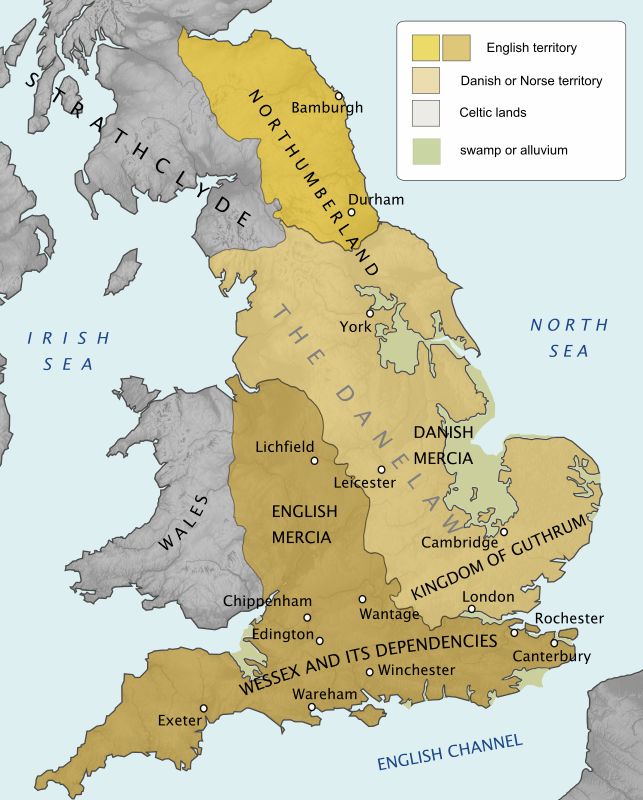
Before the Danes arrived, York was a significant religious centre. King Oswald (later St. Oswald) completed the first stone cathedral in the mid-600’s and generally is given credit, if that’s the right word, for Christianizing northern England. In 1066 the Normans arrived and were not received with open arms. It took William the Conqueror to arrive in person in 1068 and carry out the bloody Harrying of the North over the next two years that saw the almost complete destruction of every town in Northern England, including York. However, York is nothing if not irrepressible and it rose like a phoenix from the ashes of William’s fury to become the major city in the northern part of his kingdom.
In 1080 the famous church which would rise to prominence as York Minster and become the seat of one of only two archbishoprics in Britain, was begun. Clustered around it was a medieval city that thrived for hundreds of years and amazingly, much of it remains today. If you want to get an idea of what life might have been like in Middle Age Britain, York is as good a place to start as any.
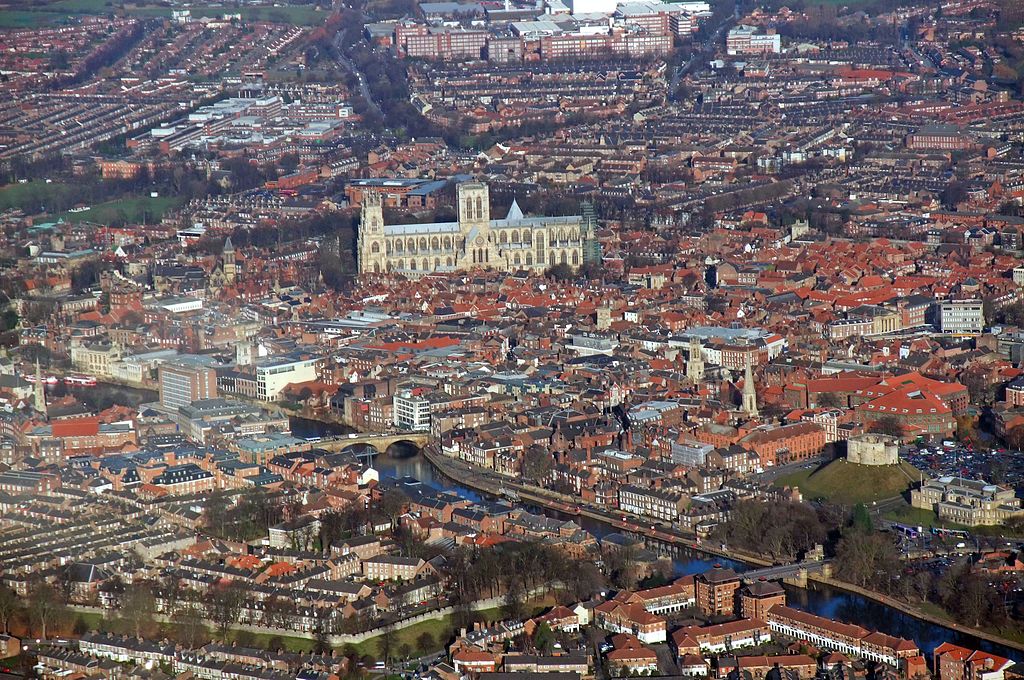
The city walls protected the dwellings inside from being destroyed during a siege by Parliamentary forces in 1644 and since then York has puttered along in its own way. Missing the worst of the ravages of the Industrial Revolution that made nearby cities like Leeds and Bradford 19th century hell holes. York instead prospered as a major railway centre (it’s now home to the National Railway Museum) and confectionary manufacturer – recognize the name Rowntree? York has won numerous awards such as European Tourism City of the Year in 2007 and just this year named Britain’s Best Place to Live by The Sunday Times. So with that very brief history it’s time to hit the pavement.
Walking the Old City
Liberation Tours has chosen a very good location for our stay, The Hilton Doubletree, which is literally across the street from one of the gates to the medieval city and only minutes from Yorkminster. I can highly recommend it as a base for exploring York.
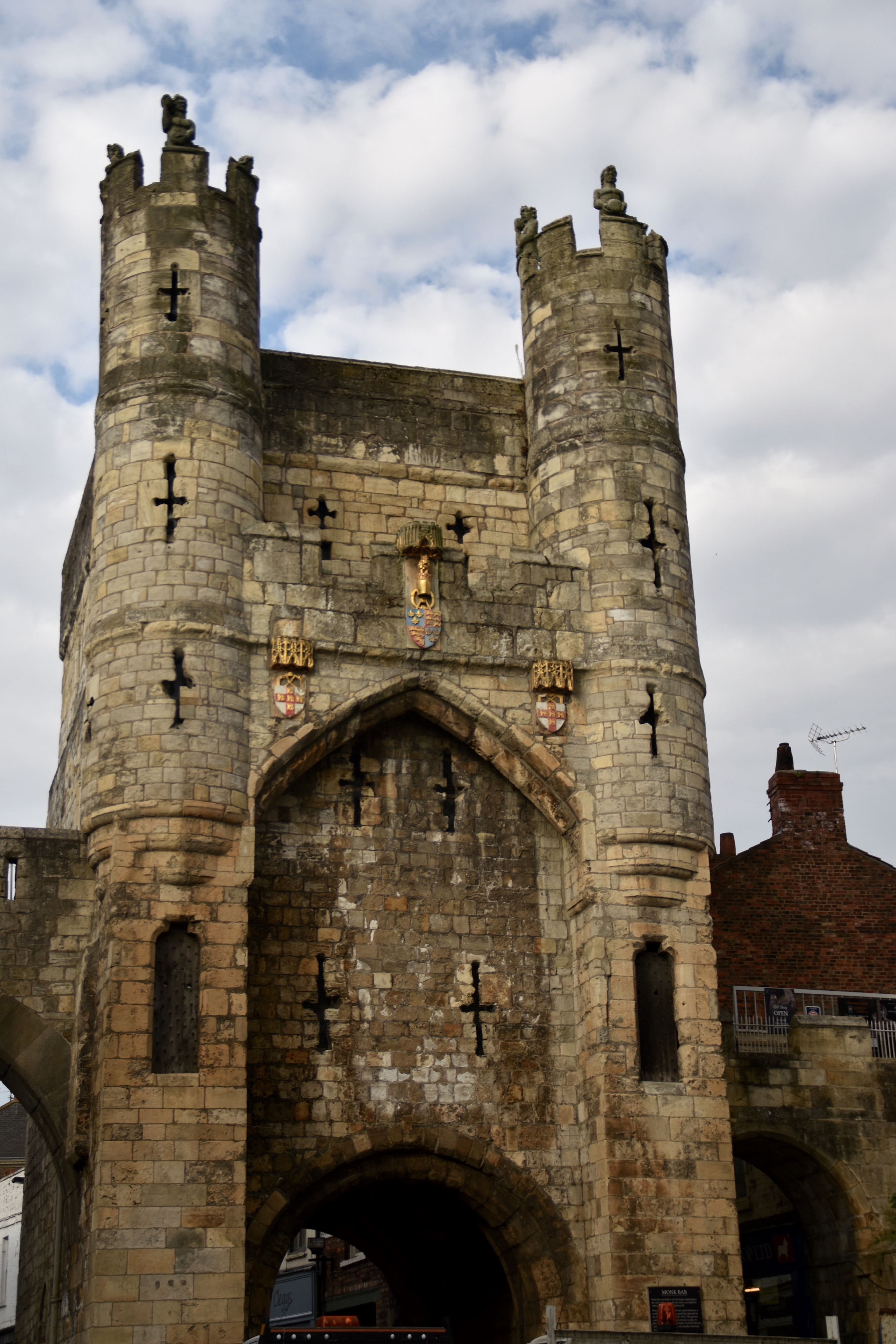
This is Goodram Gate, probably a corruption of Guthrum, the Viking king who ruled Danelaw in the 9th century and became known as Æthelstan upon his conversion to Christianity. Once you pass through it you are within the walled city and stepping back in time hundreds of years. Much of the area is pedestrianized and you’ll want to just lose yourself in the utter pleasure of walking the same streets as Roman emperors, Christian kings and saints, Viking leaders and others too numerous to name.
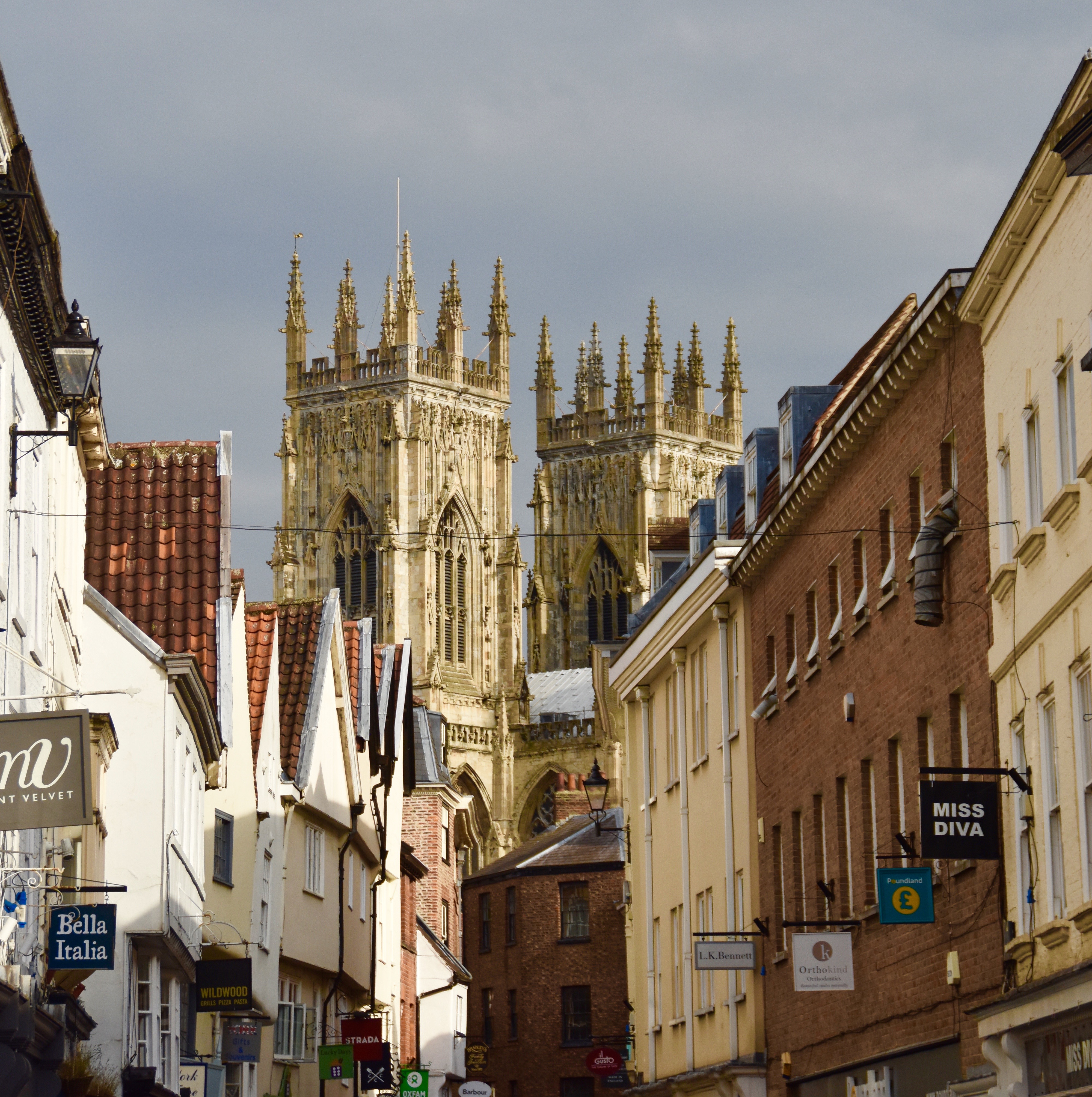
But first, you need to do a reconnaissance from the city walls. York is the only city in Britain that has maintained its city walls to such an extent that it can genuinely be called a ‘walled city’, although Londonderry might quarrel with it. This map shows that a good 75% of the walls remain today and although there is no continuous circuit like you find in Dubrovnik or Avila, it still is more than worth it to walk at least a portion of them. If I had the time, I’d do them all, but for today I am going to enter through Monk Bar, another name for Goodram Gate, and walk as far as Bootham Bar, hoping to get great views of Yorkminster along the way.
BTW the map also shows the extent of the perfectly square Roman fortress walls. The portion I will be walking was originally built by the Romans. Boy, did those guys know how to build things to last!
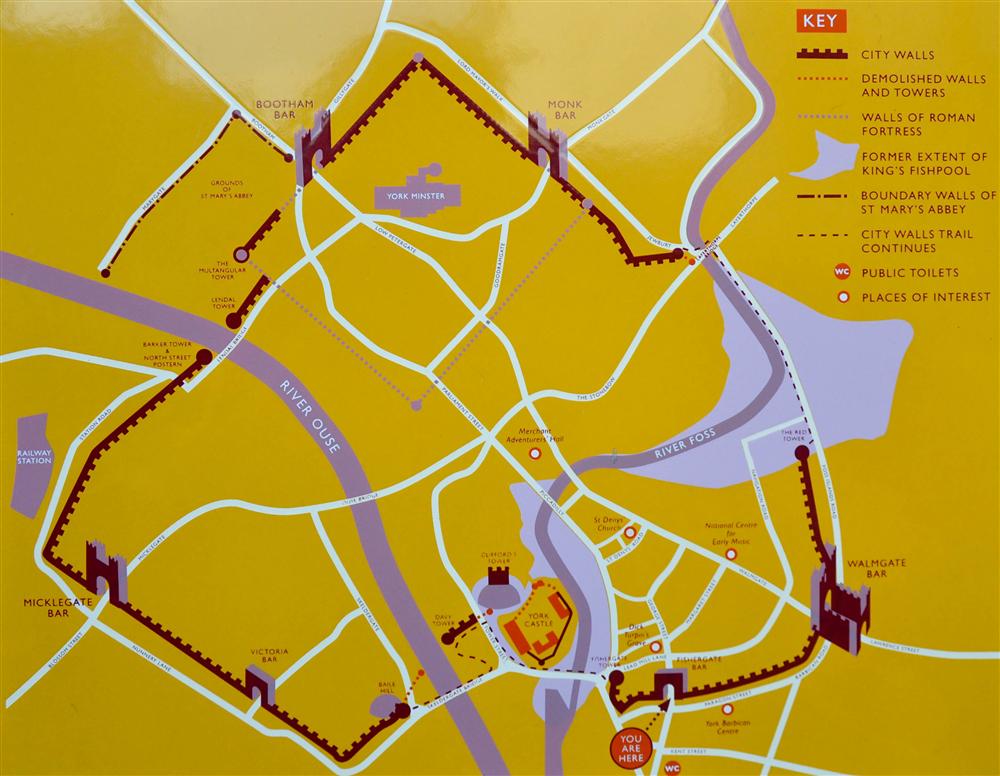
One thing York has over Dubrovnik and Avila is that you don’t have to pay to walk the walls, but you need to keep a sharp eye out for the almost minuscule entrance.
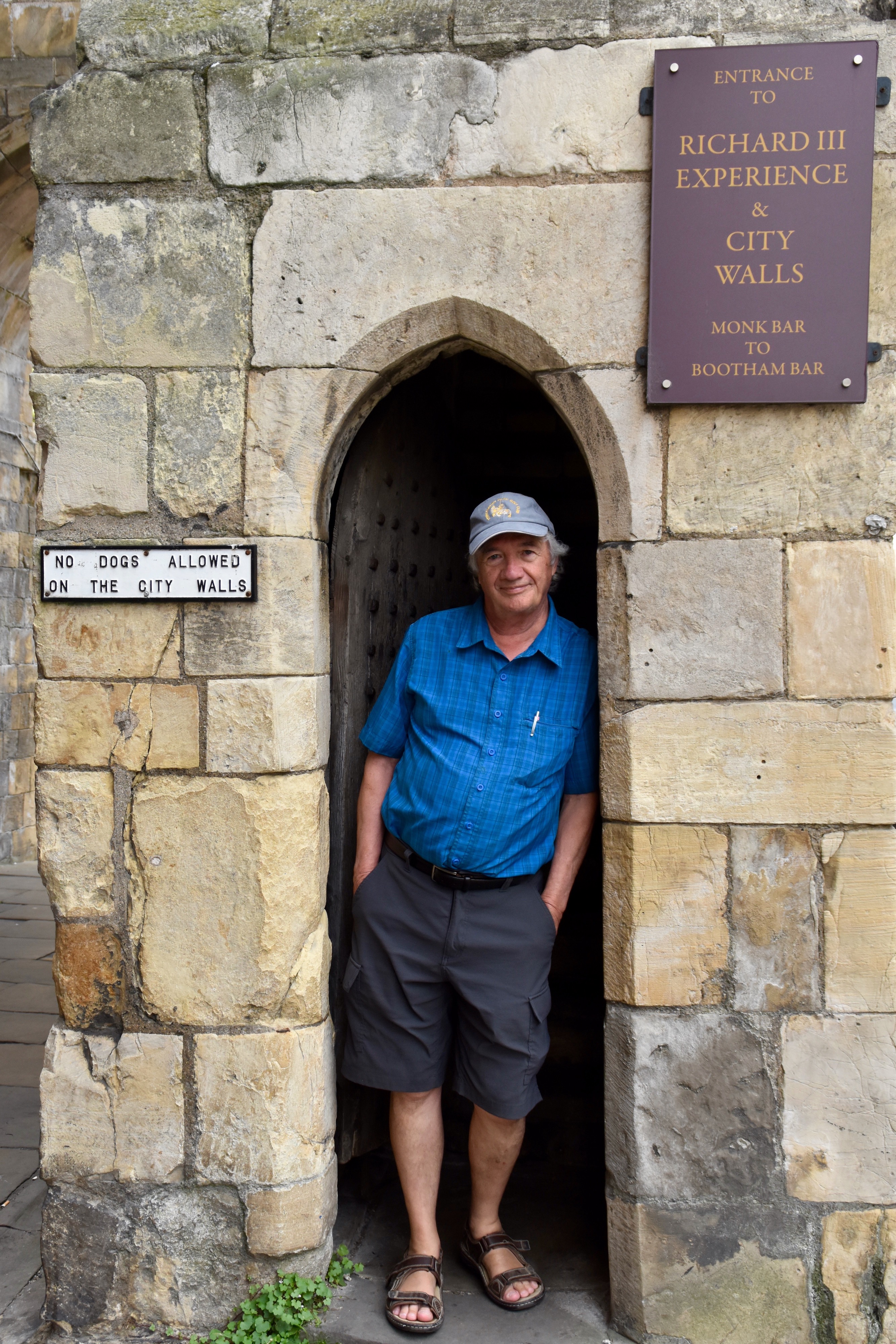
The walls do not disappoint and provide this great view of York Minster.
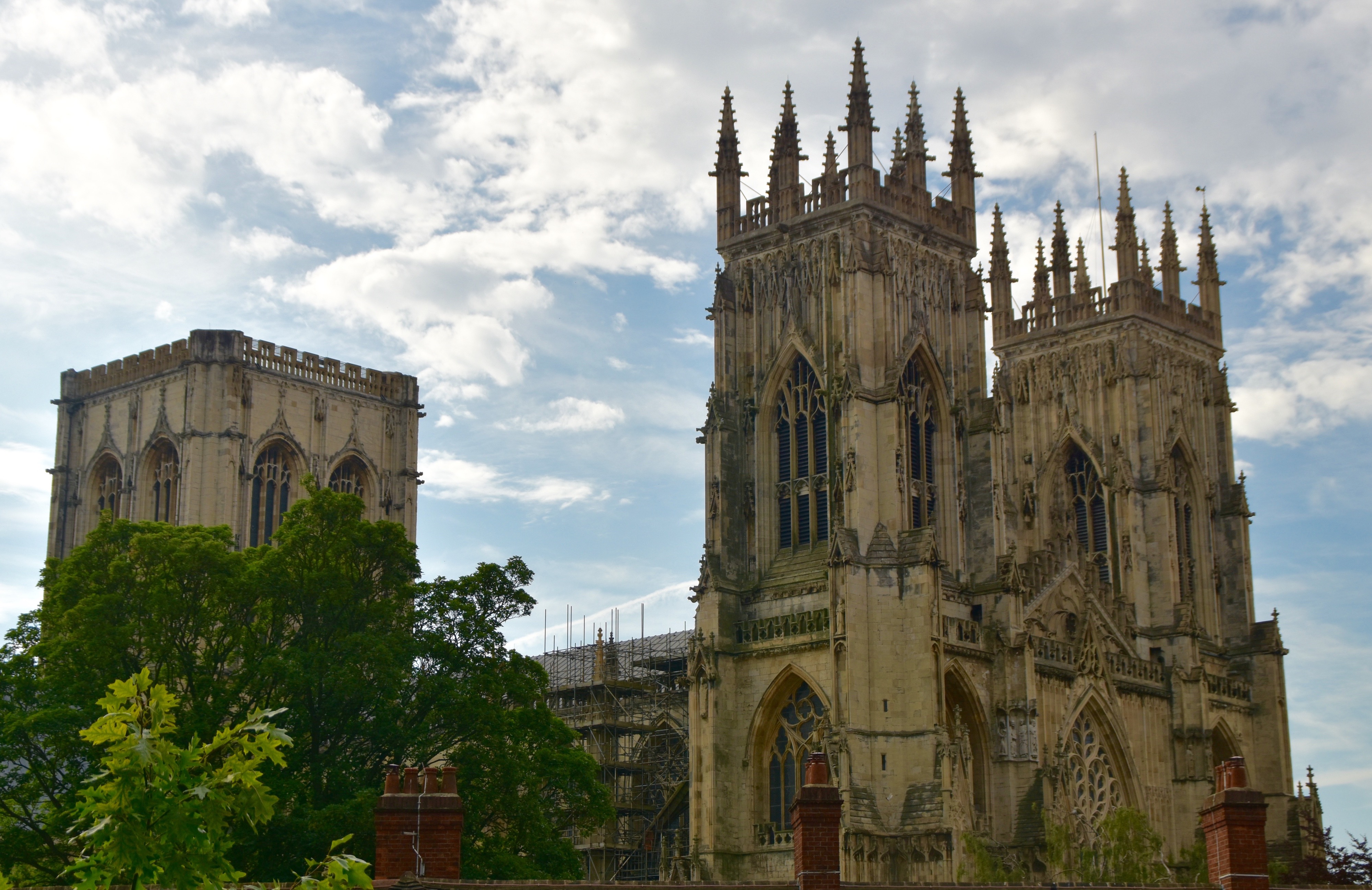
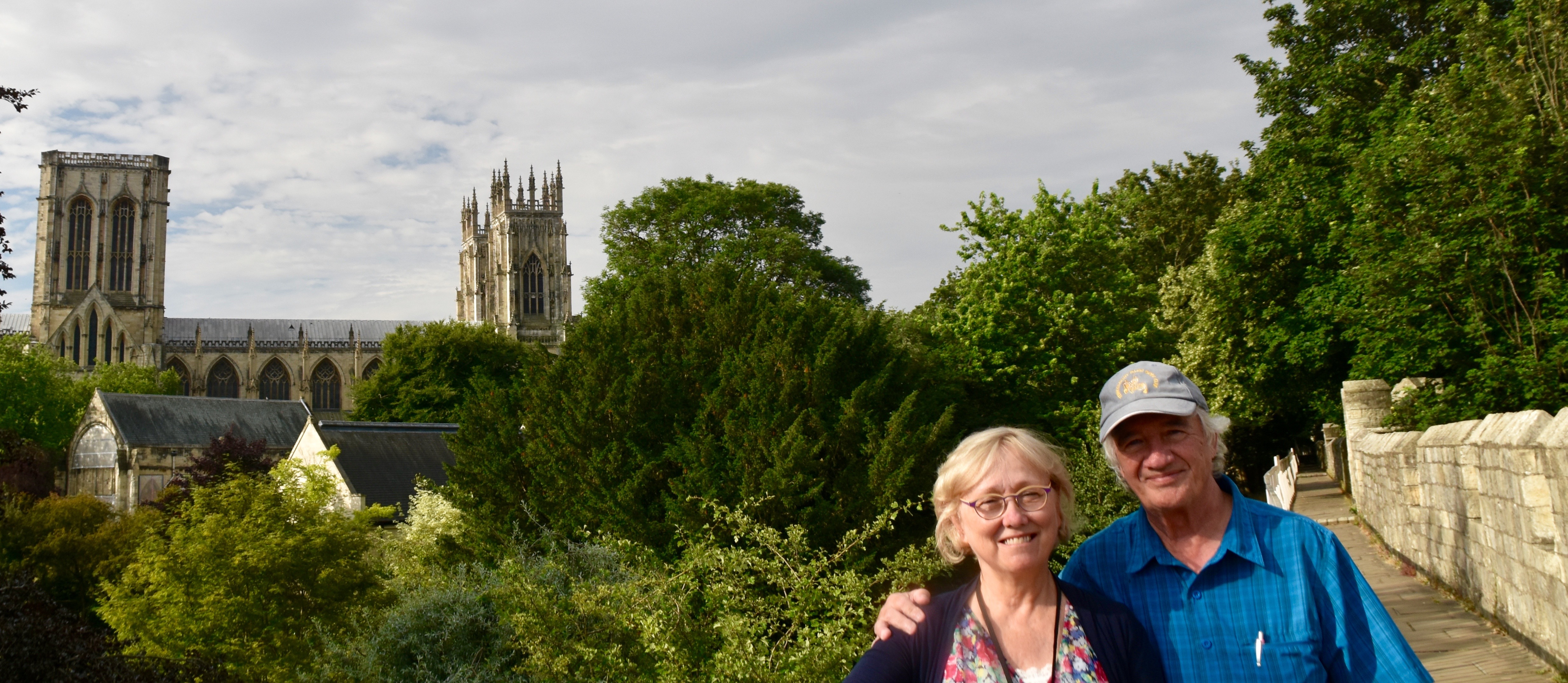
As you can see from the above photograph the walls are not wide and much of the inside area between Monk and Bootham Bar is actually greenspace.
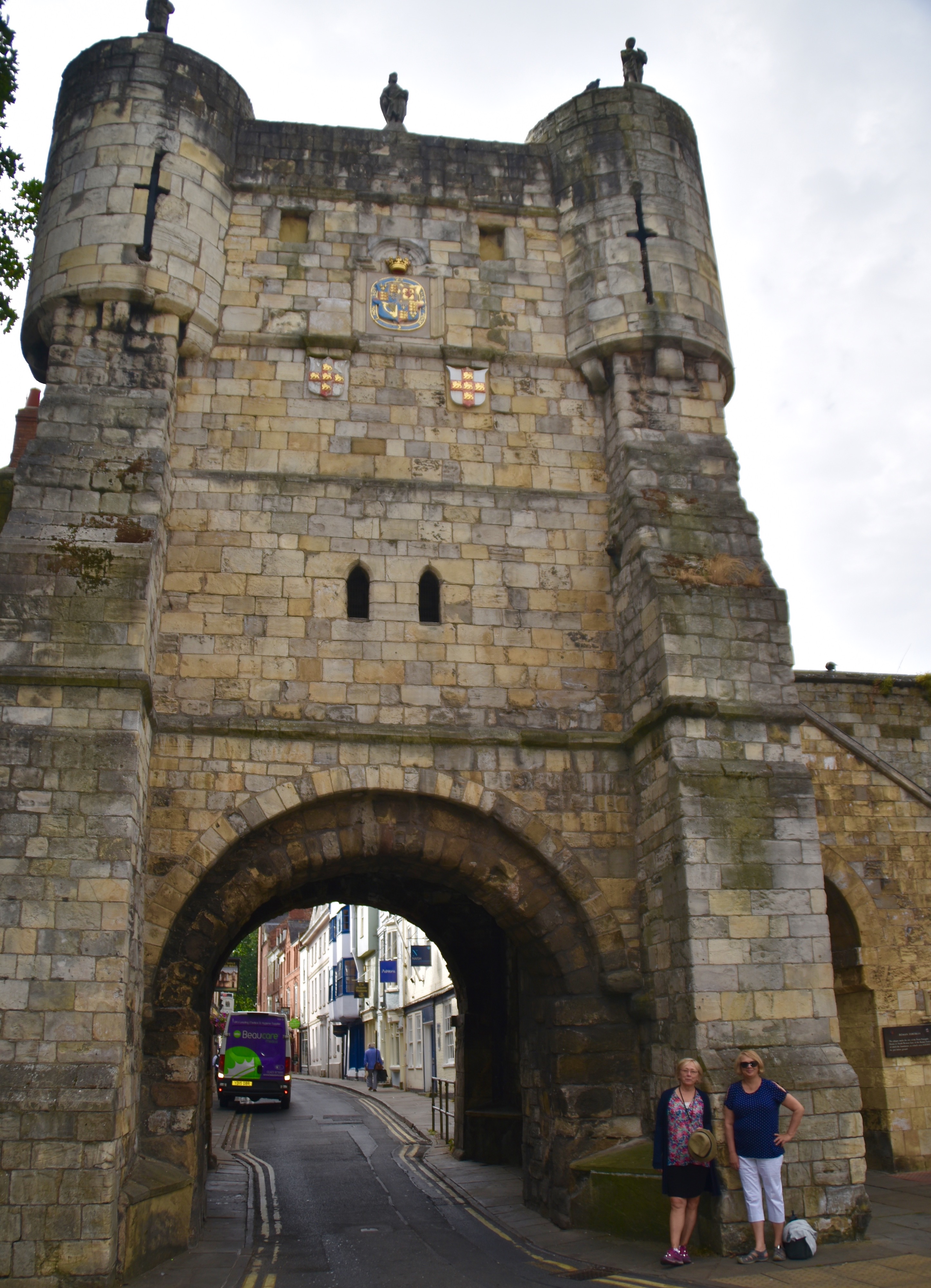
This is Bootham Gate which was the original entrance to the Roman fortress. The streets are no wider than they were in Roman times. So let’s go inside the ancient city and ramble or perhaps I should say shamble.
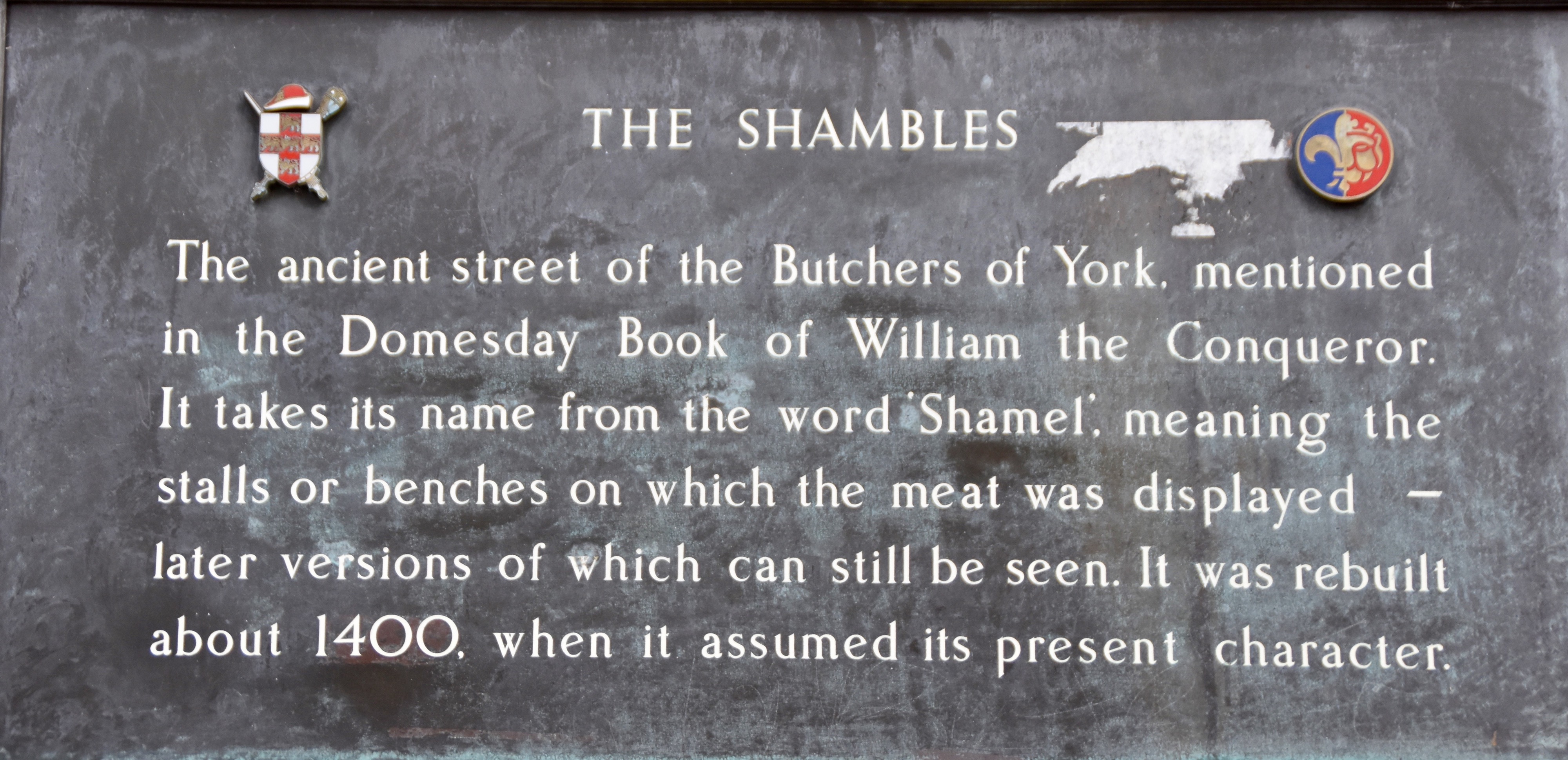
The Shambles is an area where the streets look like this, in a photo I borrowed from Visit Britain – Andrew Pickett, photographer. It’s a place to put away the map and just wander.
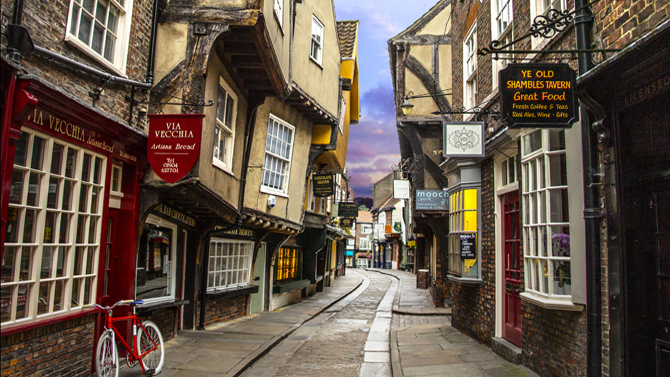
One of my favourite things to photograph is English Tavern signs. I dearly miss getting a photograph of the Dandy Dick outside Manchester, but here’s a few from York, just centring on bird themes.
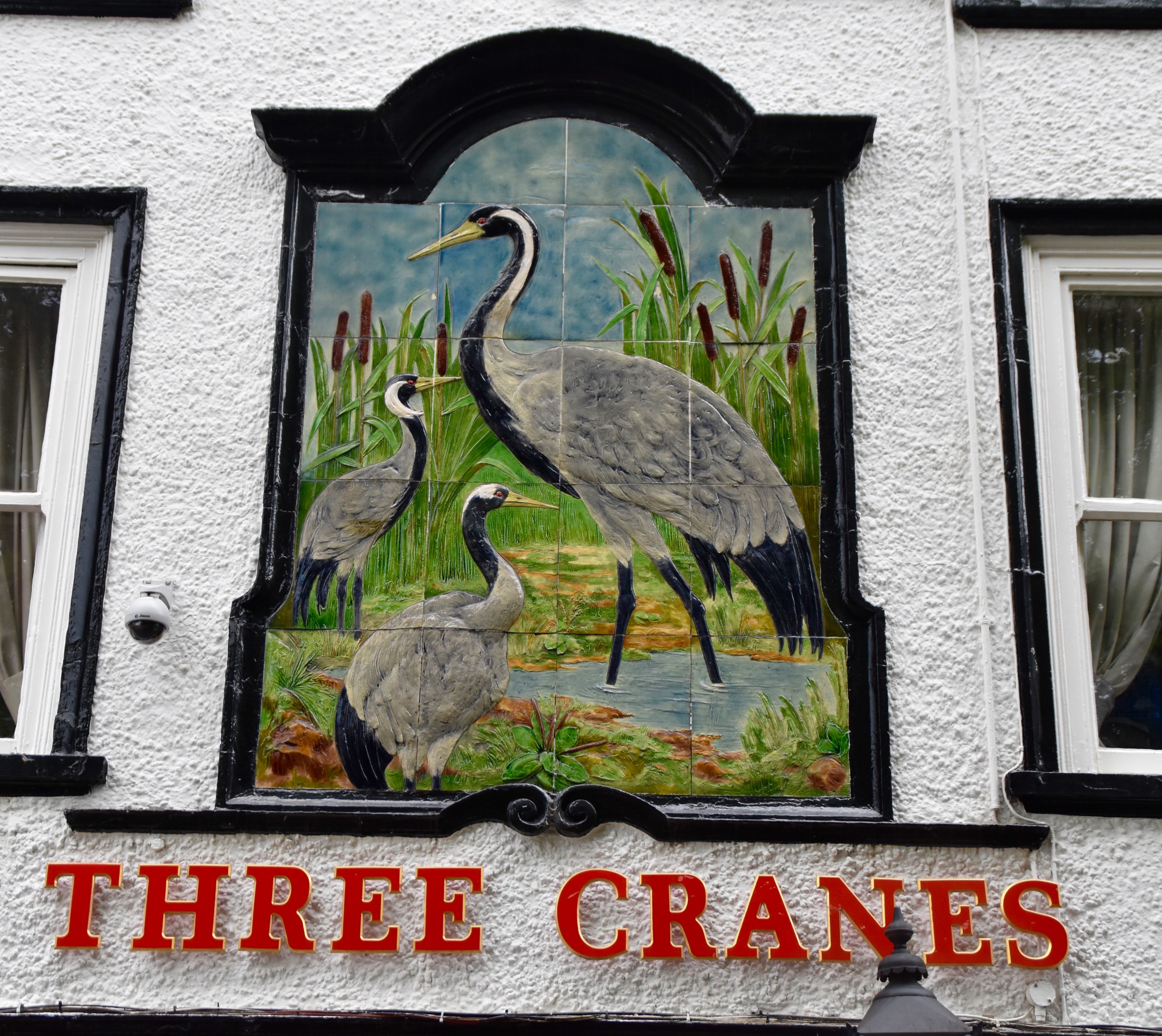
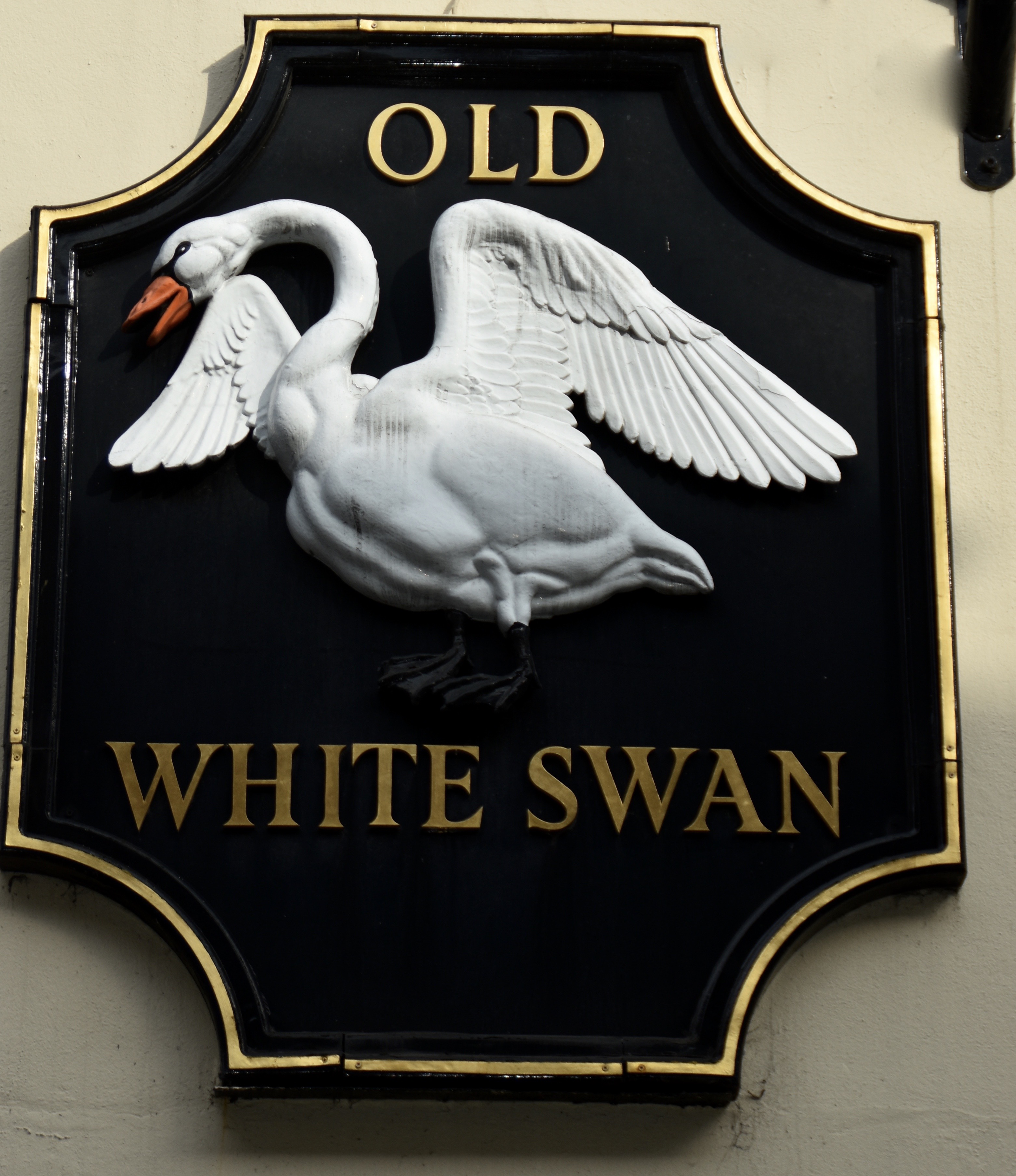
One could easily spend a day just walking around and creating a collage of interesting signs or dropping into shops like this of which there were more than a few in the old city. If you ever wanted to know where to buy a suit of Samurai armour, now you know.
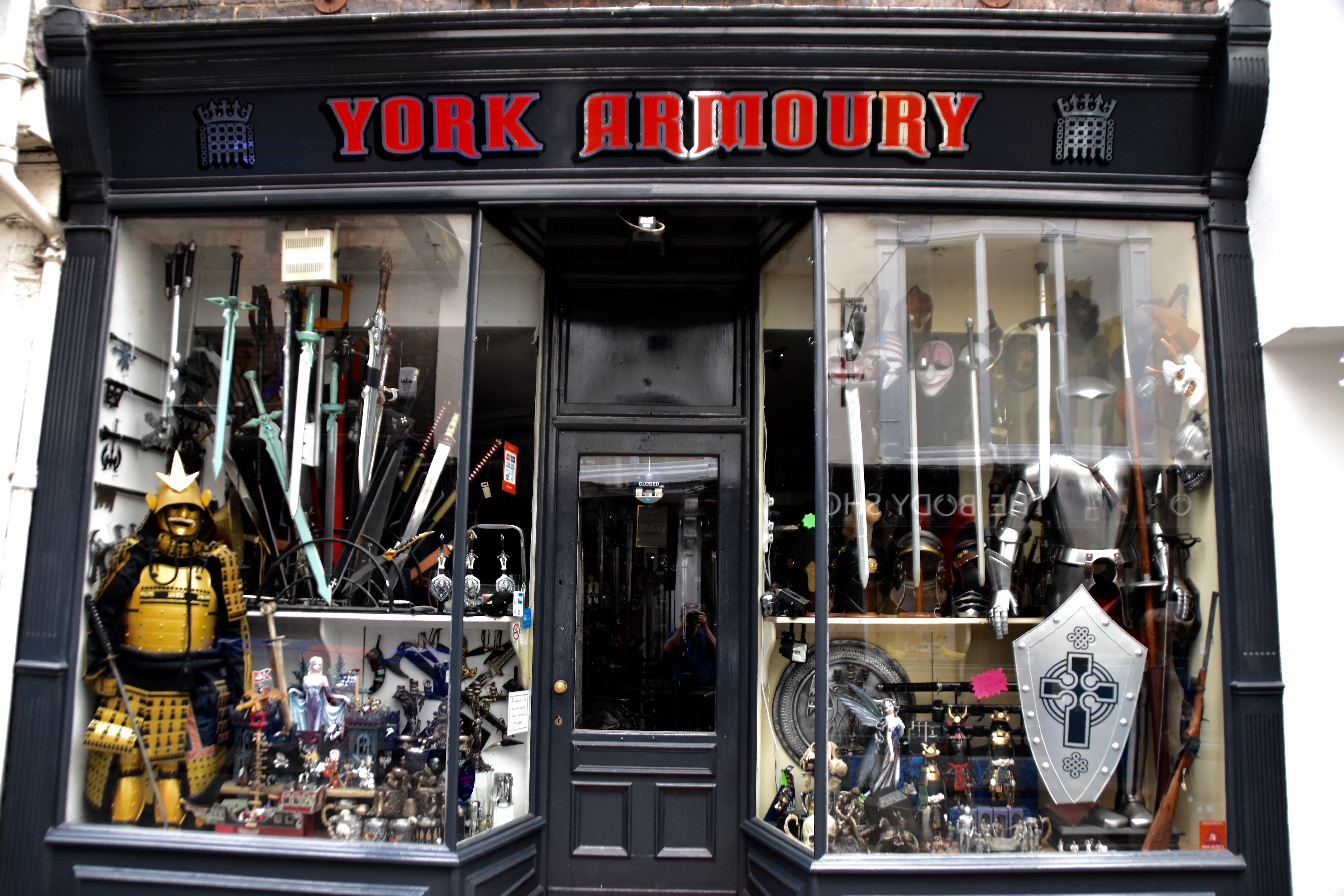
Or maybe you’ll stumble across some interesting historical fact you didn’t know (or at least I didn’t) like that Guy Fawkes was from York.
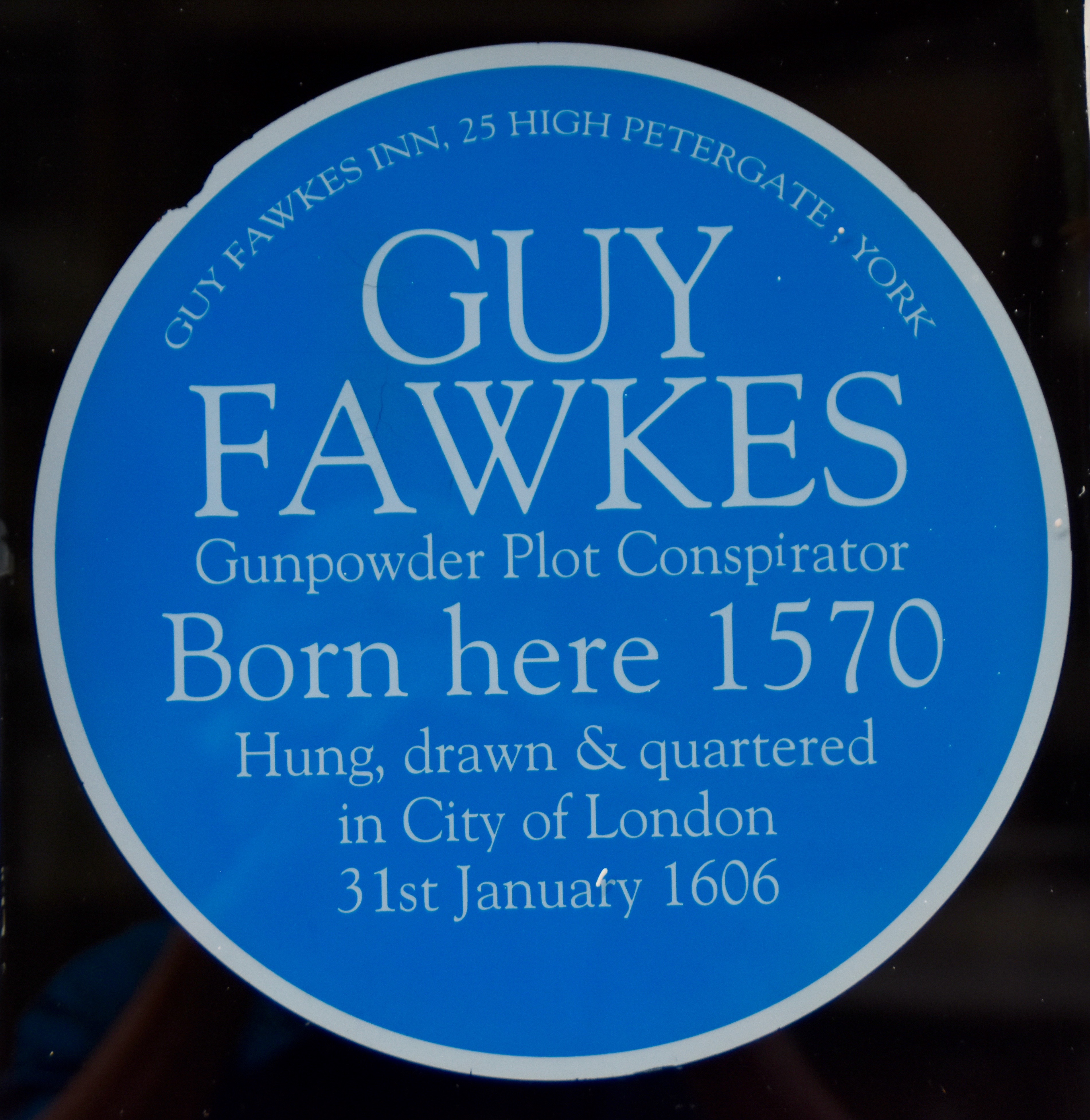
And if you’re not sure who Guy Fawkes was then you will surely recognize this face. Yes, he is the face of the hacktivist group Anonymous which most people either admire or despise. I’m lukewarm myself.
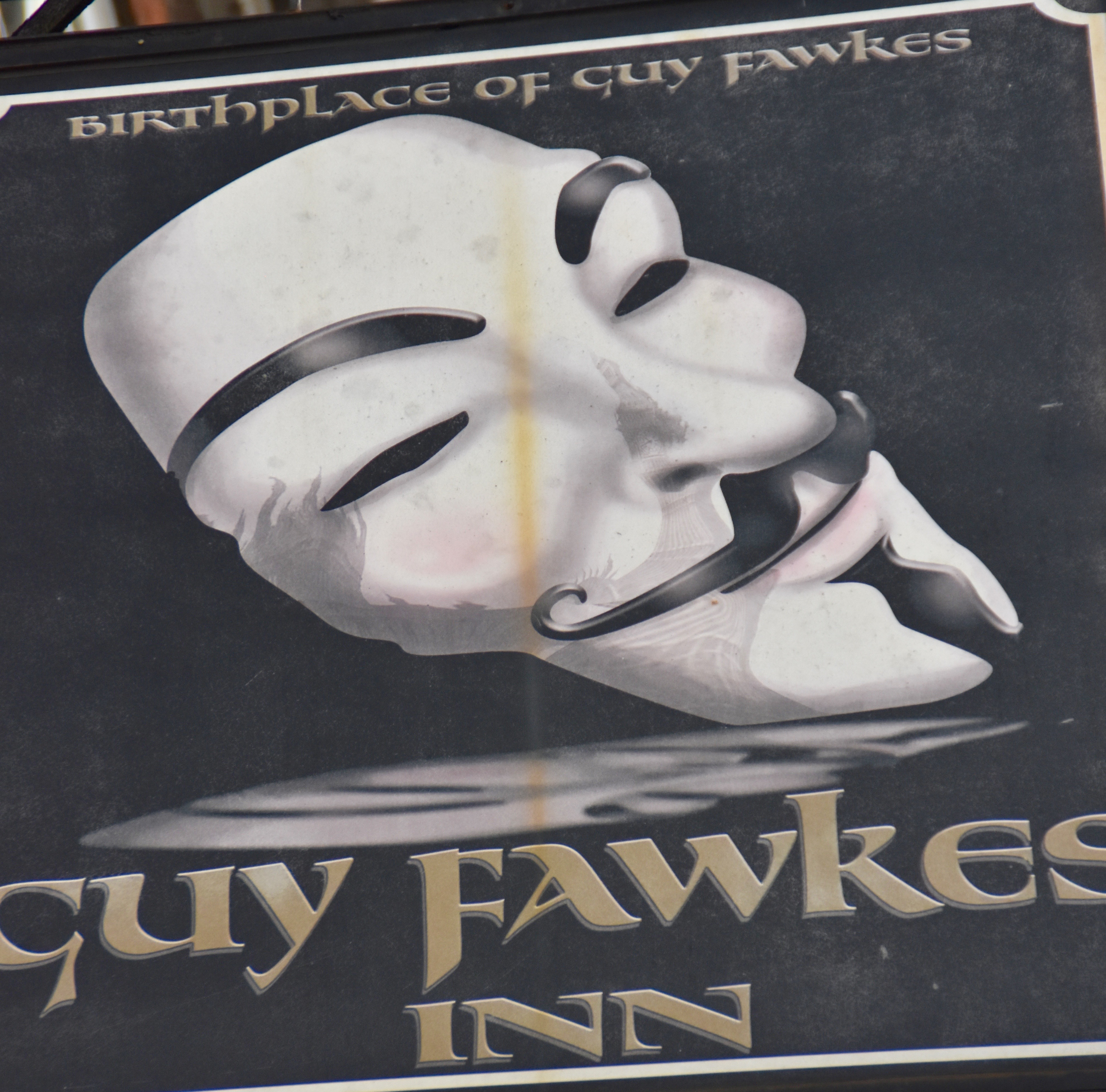
Coincidently, President Trump had just concluded his embarrassing and vastly protested visit to Britain the day before and I came across this poster left behind from a demonstration held near the cathedral.

The Roman presence in old York is also very prevalent. This is a statue of the Roman goddess of wisdom Minerva or Athena as the Greeks first called her. It’s truly difficult to get my head around the fact that Roman temples once stood on this site in Northern England that is almost 1,500 miles from Rome.
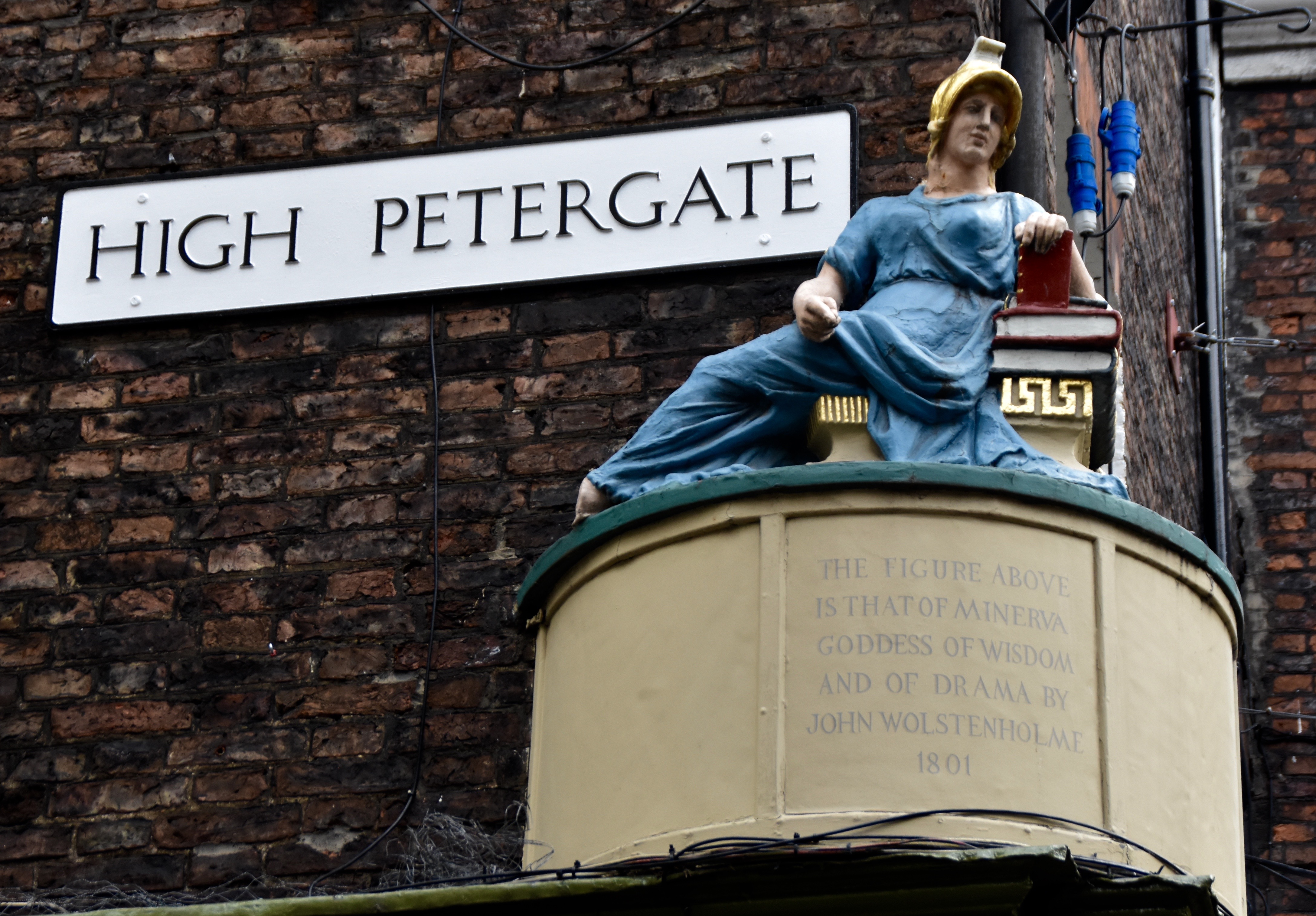
And then you come across an actual Roman pillar still standing (although resurrected to be sure) just outside Yorkminster.
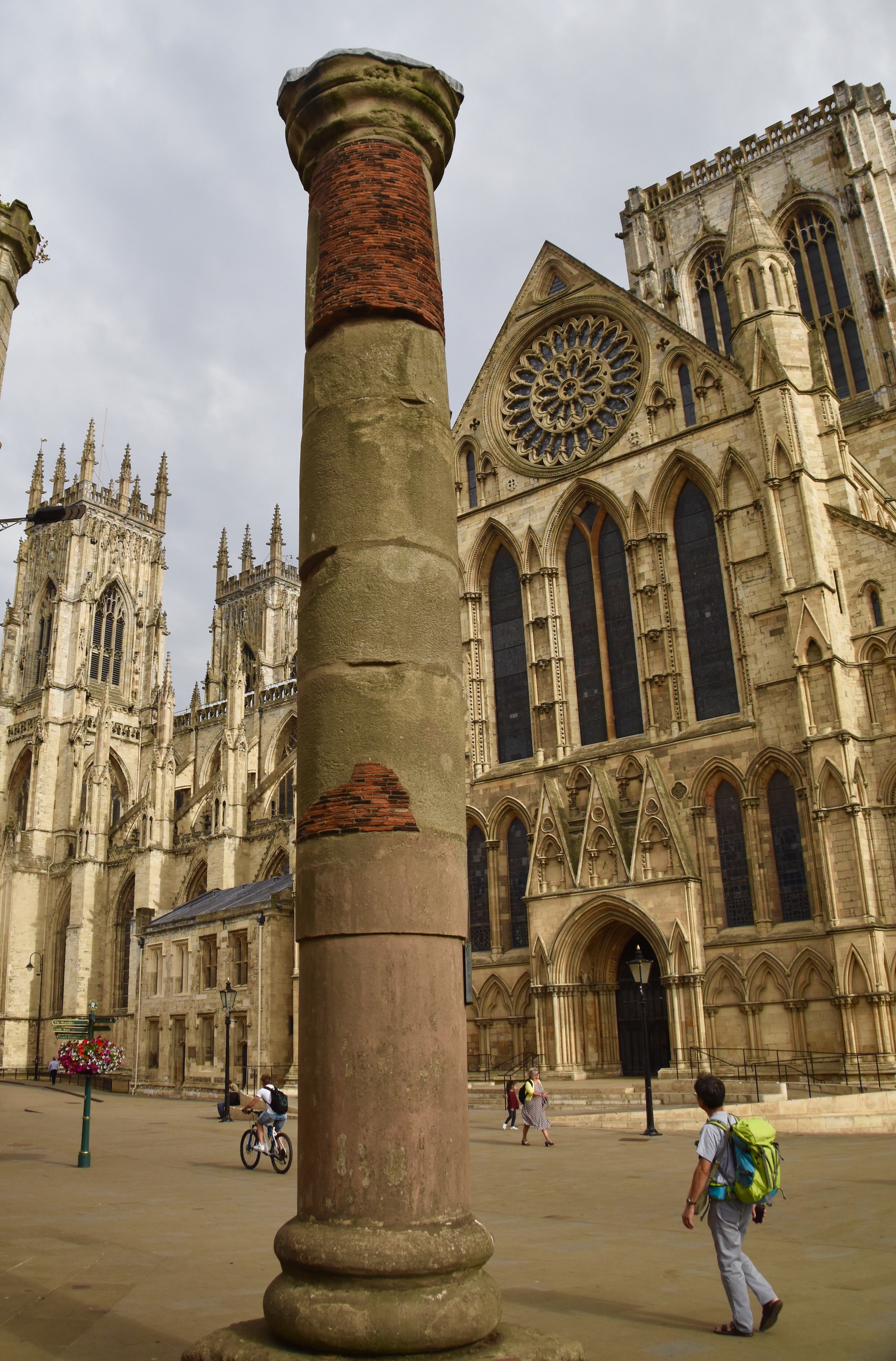
And then you come to the most important event to happen in York during the Roman period – the proclamation of Constantine as Roman emperor on this very spot in 306 AD. Constantine, who earned the sobriquet The Great, was one of the most important Roman emperors of all for two reasons. First he sanctioned the Christian faith as the religion of the Empire and secondly he founded the city of Constantinople and created a Byzantine Roman Empire that would outlast the western empire by a thousand years. That’s a pretty impressive legacy for a guy who ran away to Britain to avoid being assassinated by sitting emperor Galerius.
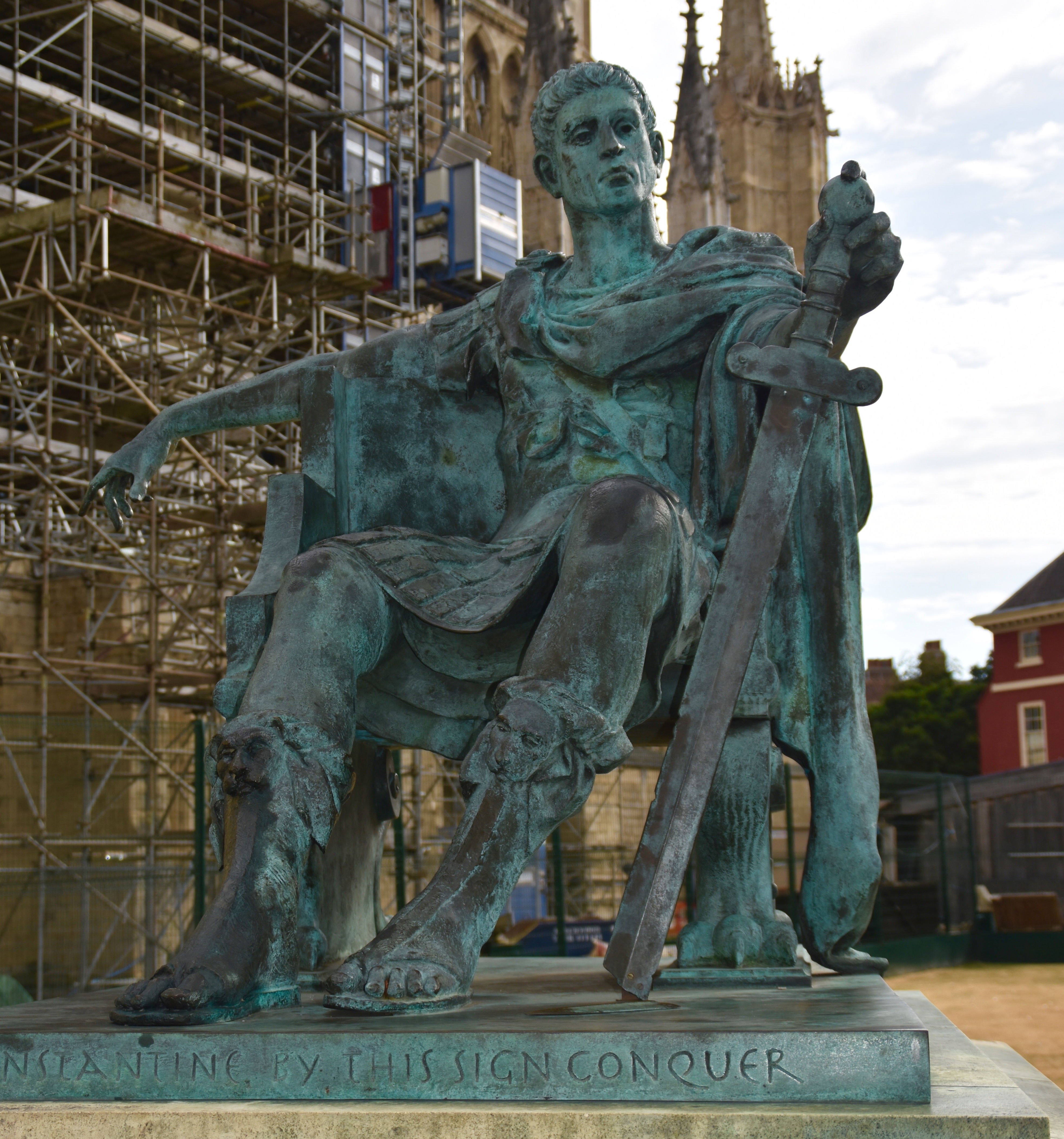
York Minster
Ok, we’ve been poking around narrow streets looking at I will call the small picture. Now it’s time for the big picture that dominates all of walled York – York Minster. While a minster is a cathedral, not many cathedrals are minsters which is an Anglo-Saxon term for a church associated with teaching and attached to an abbey. Built between 1220 and 1472, it is the seat of the archdiocese of York and in terms of historical importance behind only Westminster and perhaps Canterbury.
Let’s start by taking a walk around the outside before going inside. This is a structure that looks great from any angle so be prepared to take lots of pictures. The first thing that you might notice is that despite the fact that this is the height of the tourist season, there are no great crowds. Visiting Westminster Abbey or Notre Dame can be a downright painful experience as you jostle with and get jostled by the thousands of other tourists wanting to get in or get that great exterior shot. Not so here.
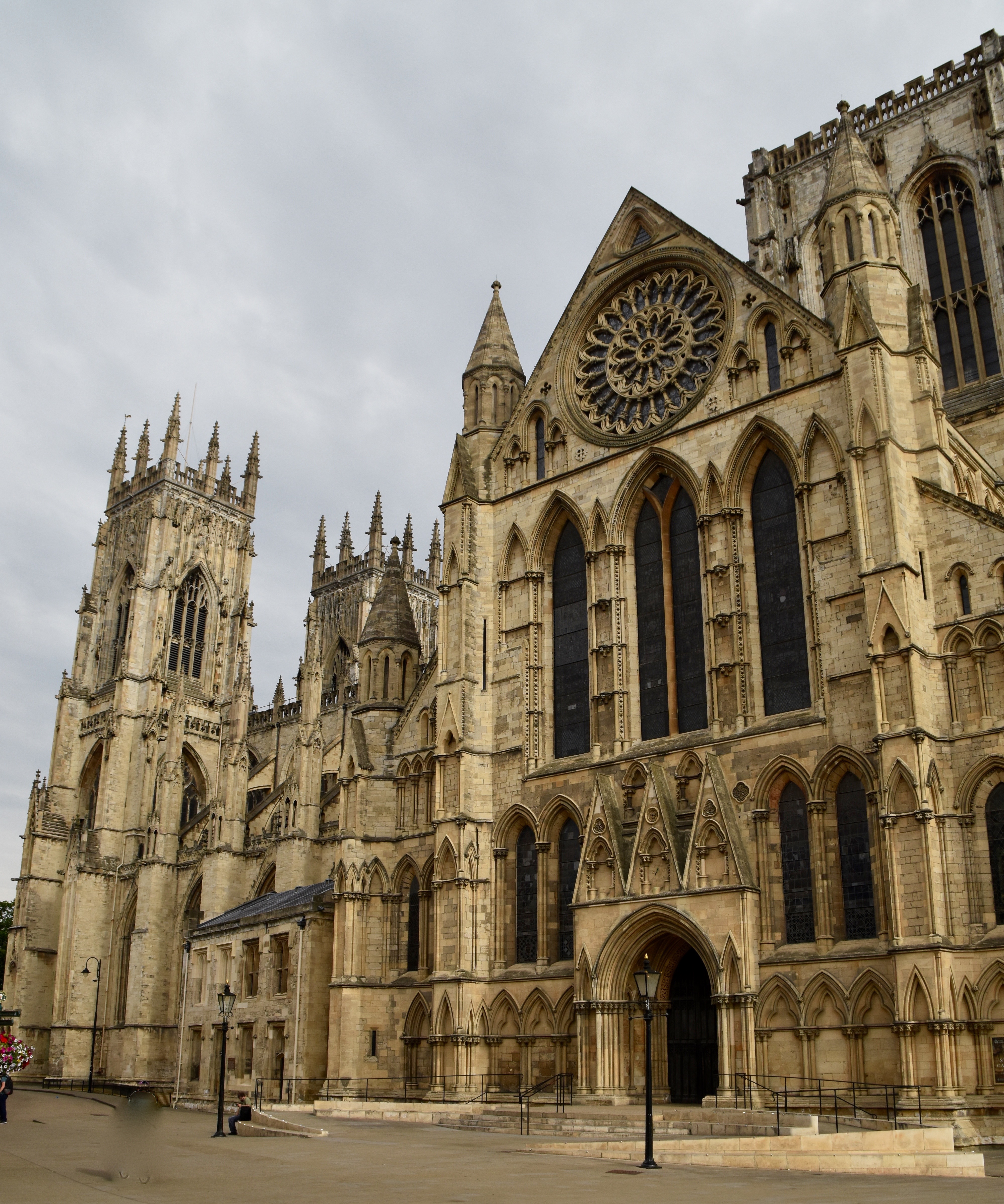
This is a shot of the exterior of the Great Window, the largest such in Britain.
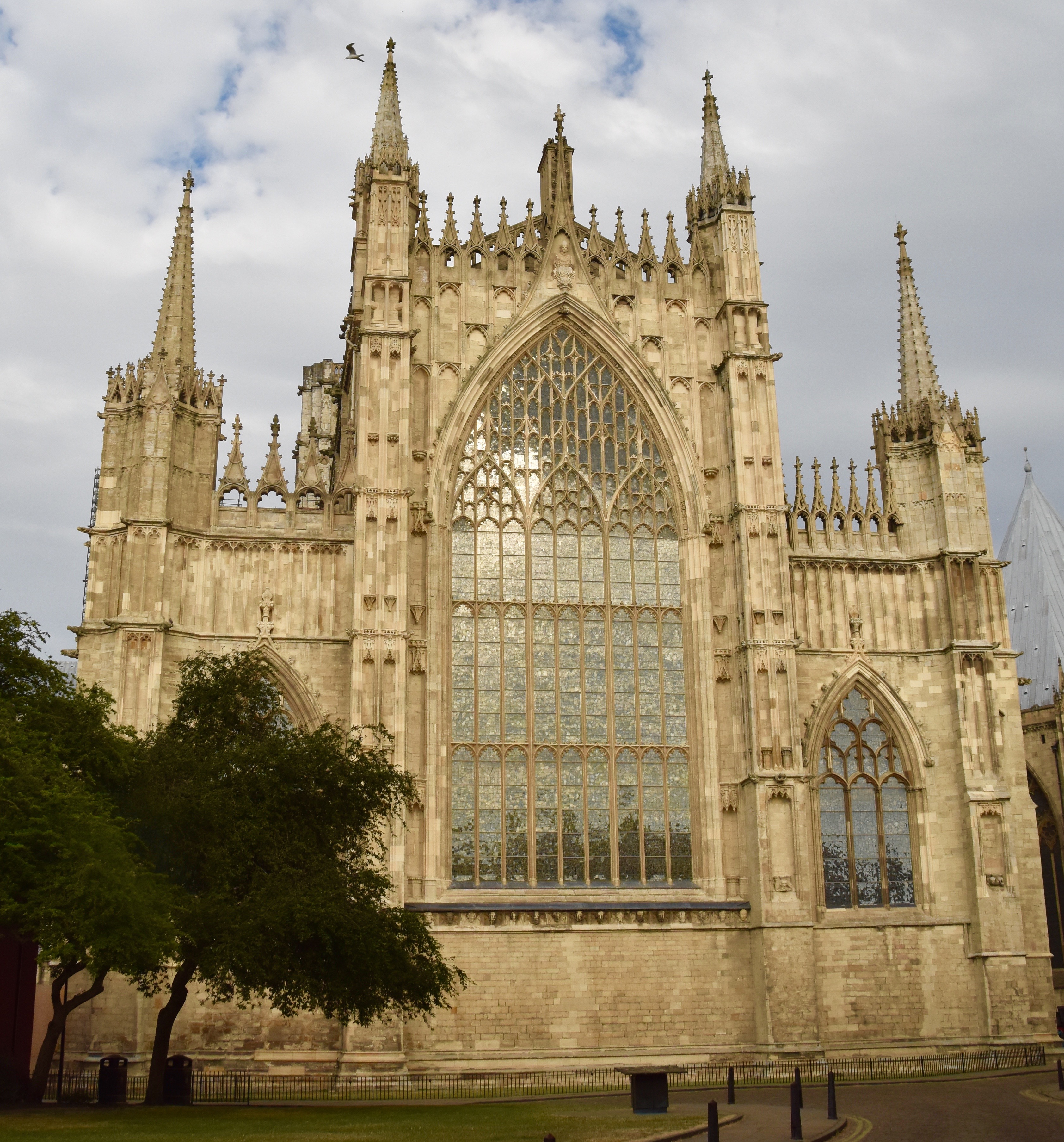
This is the rear of the great building.
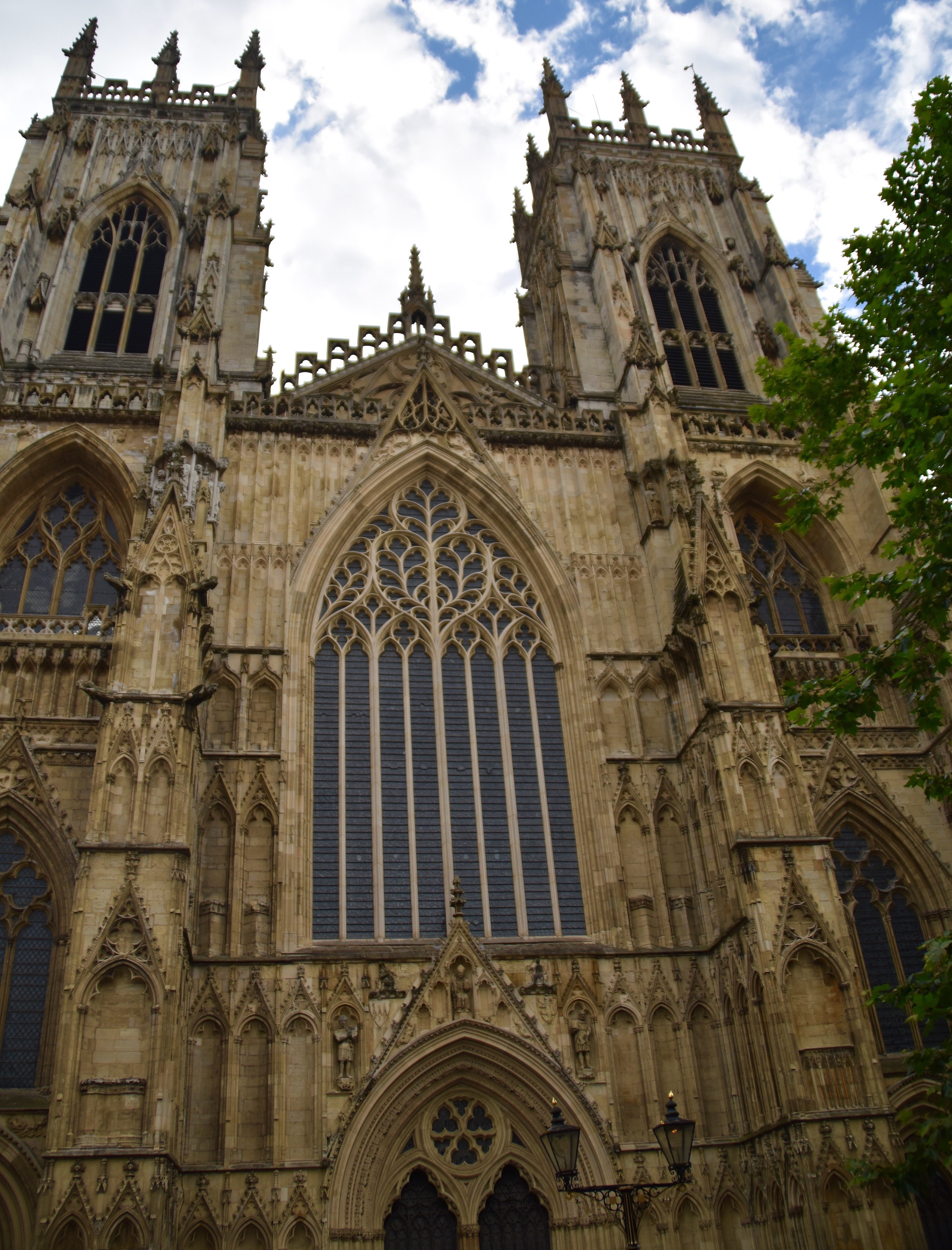
If you like gargoyles the York Minster is your place because you might say York Minster is infested with them.
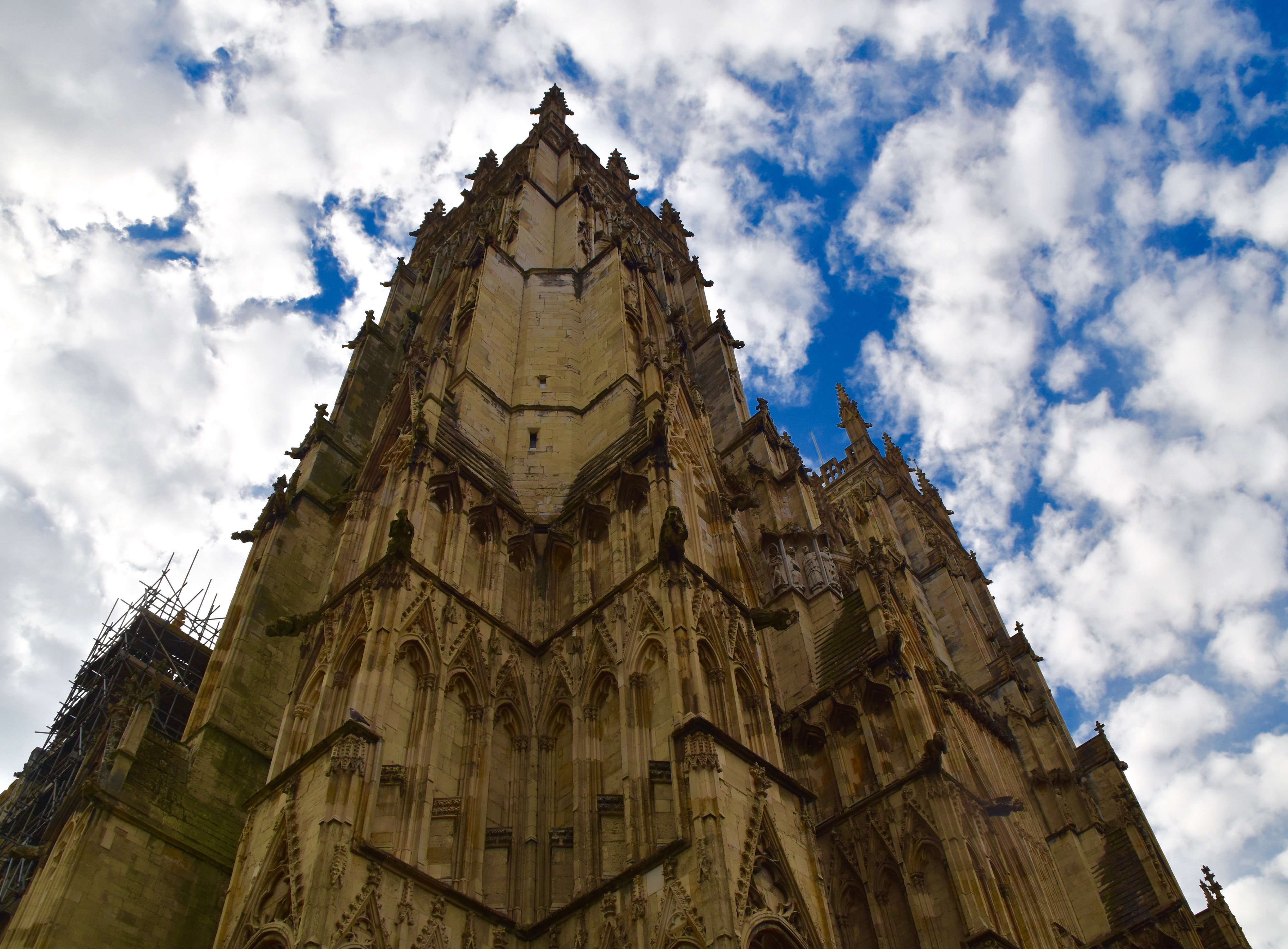
The work of maintaining a gothic cathedral is never ending and York Minster is no exception. It even has its own on site permanent stone masons who were hard at it during our visit.
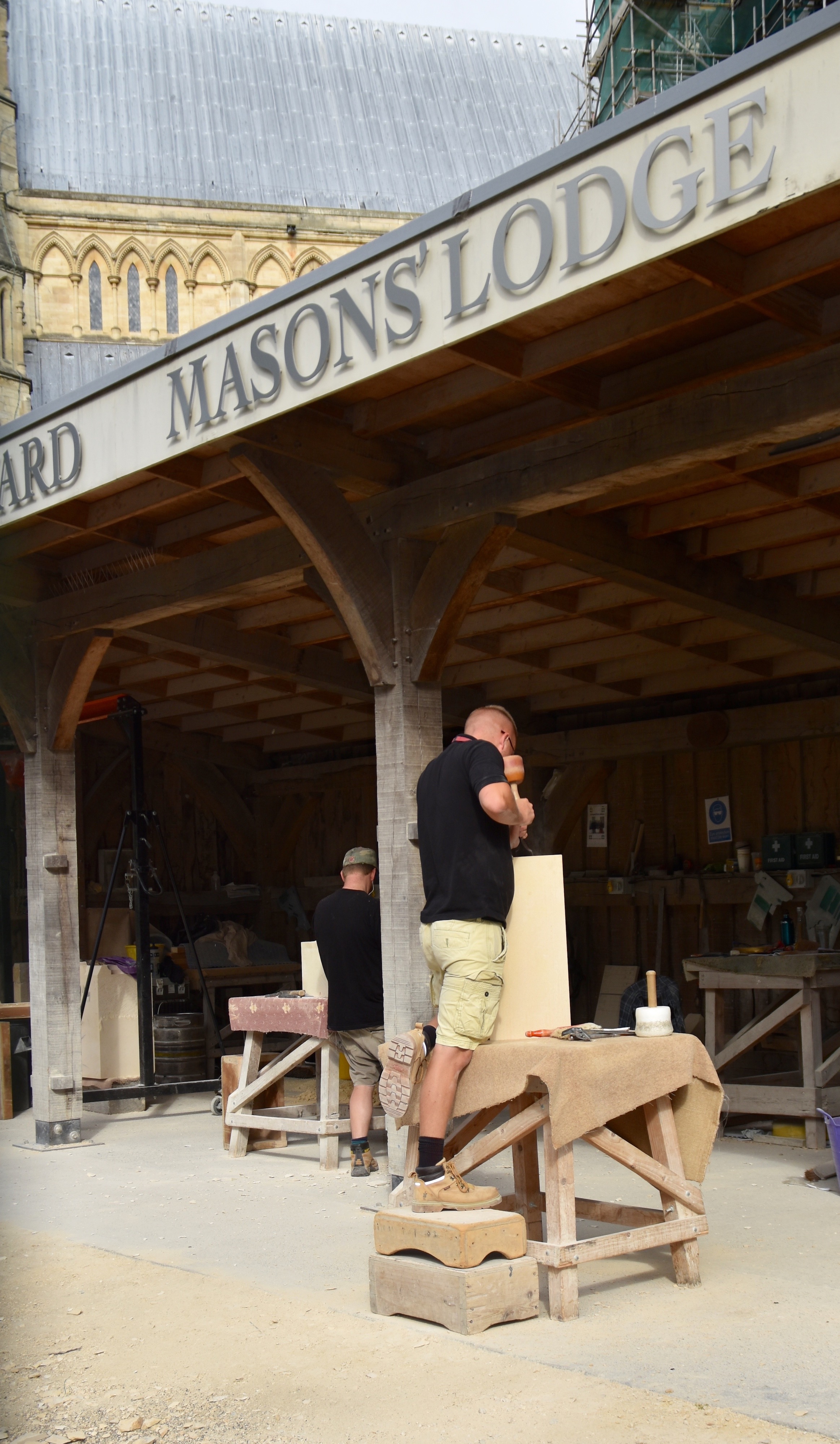
Admission to York Minster is £11 (9 for seniors) or £15 if you want access to the Tower. Both include a free guided tour or you can do as we did because of time constraint, just wander on your own.
While the nave and choir are impressive.
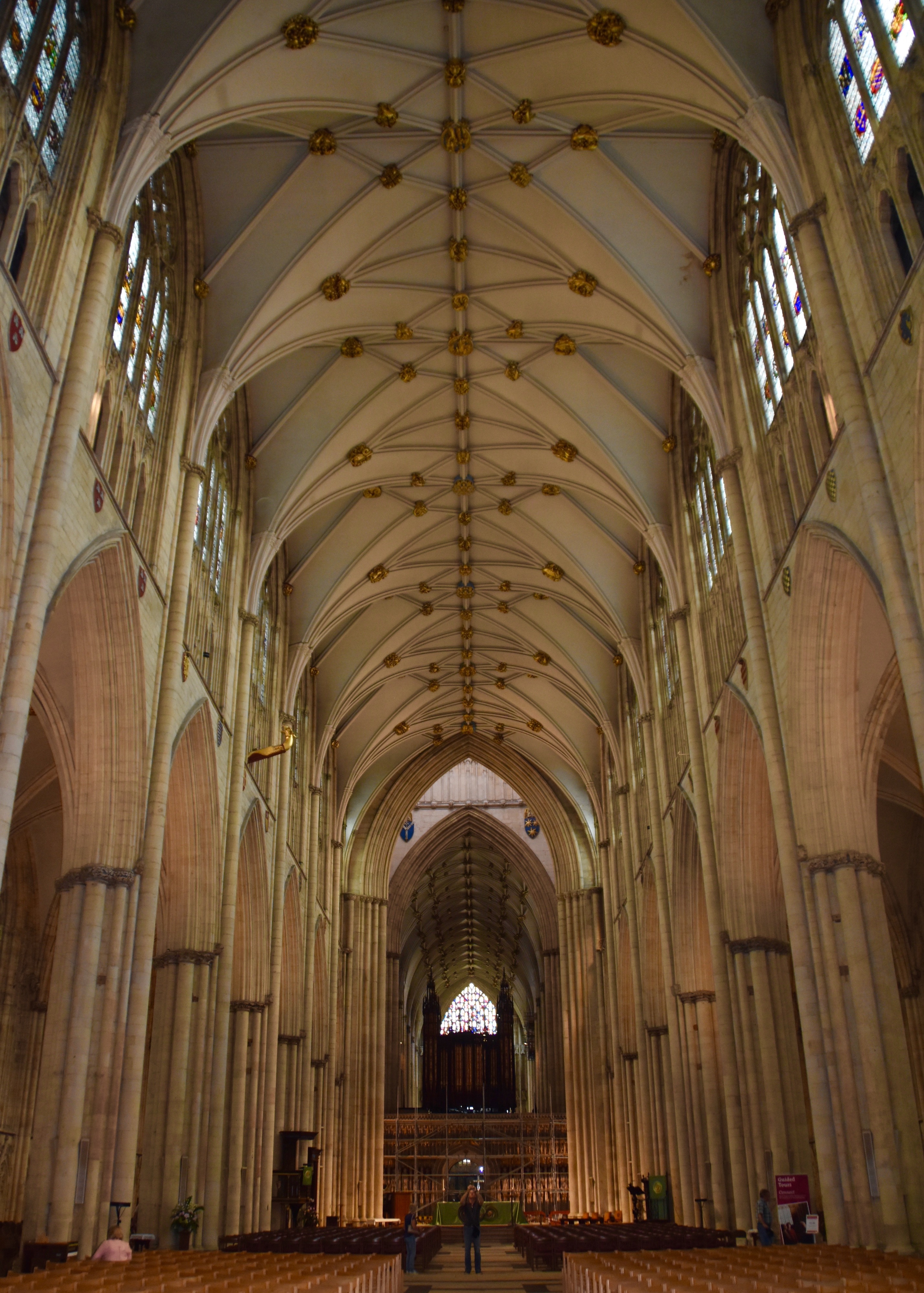
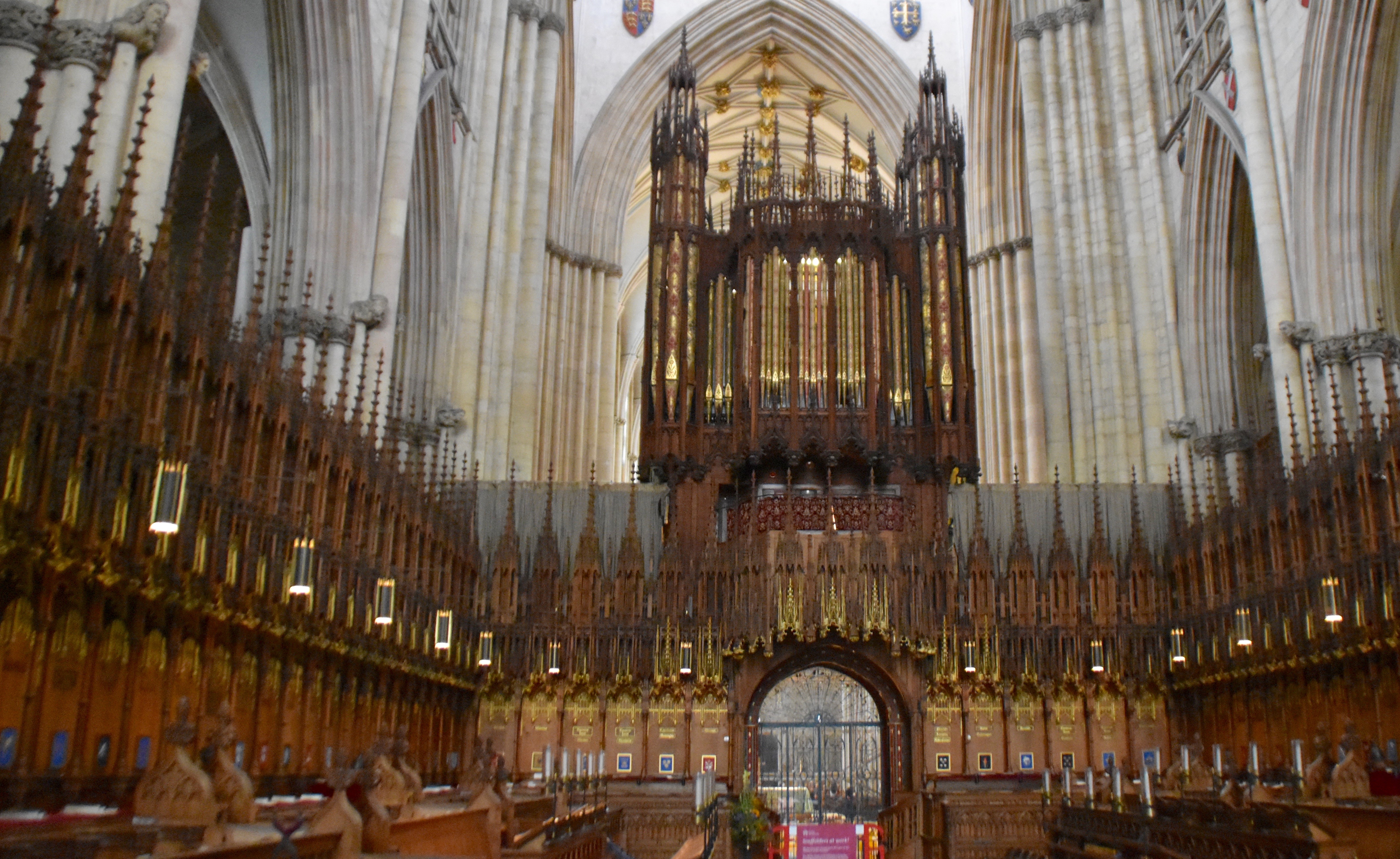
It is the stained glass that is the real star of the interior, particularly the Great Eastern Window.
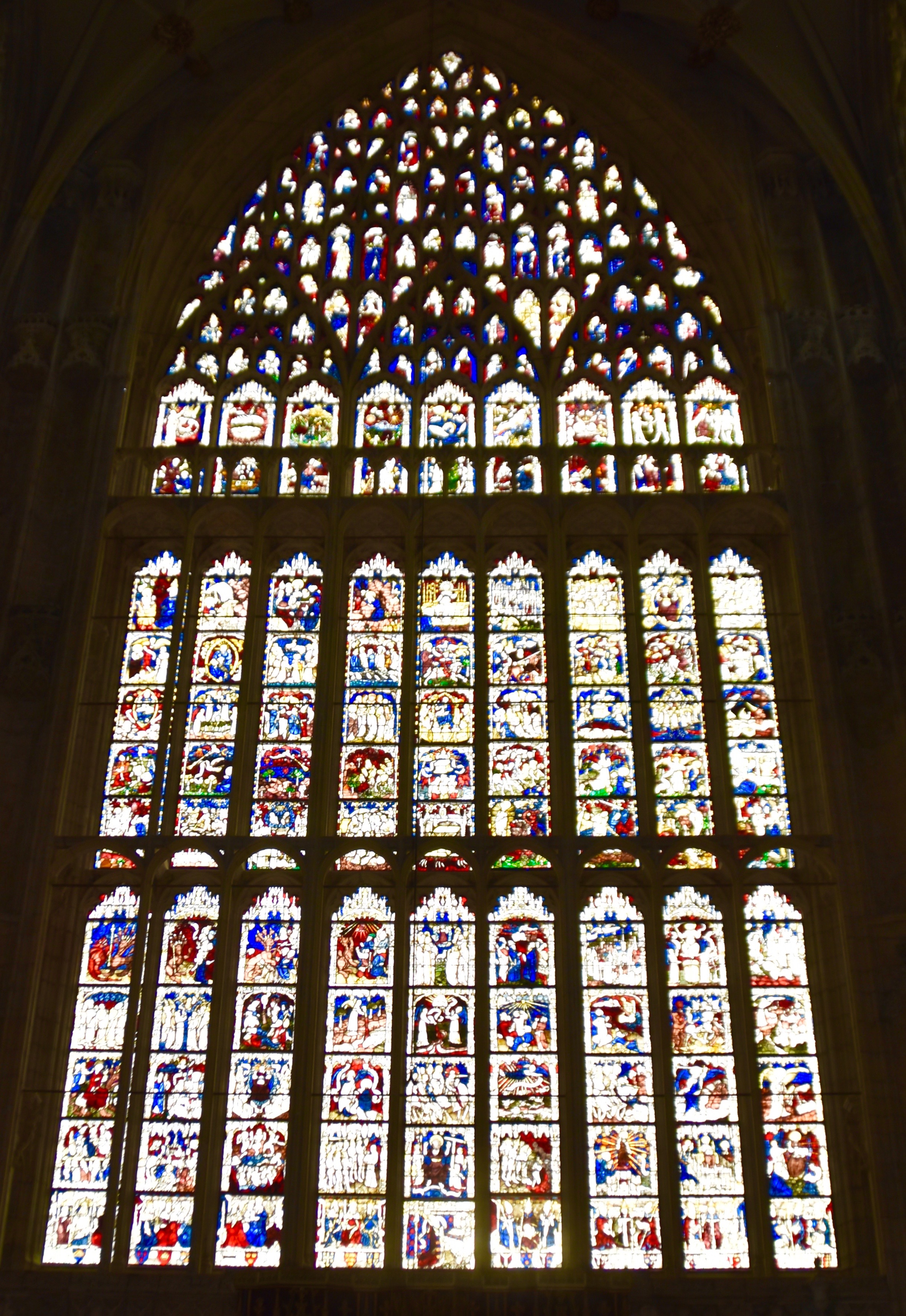
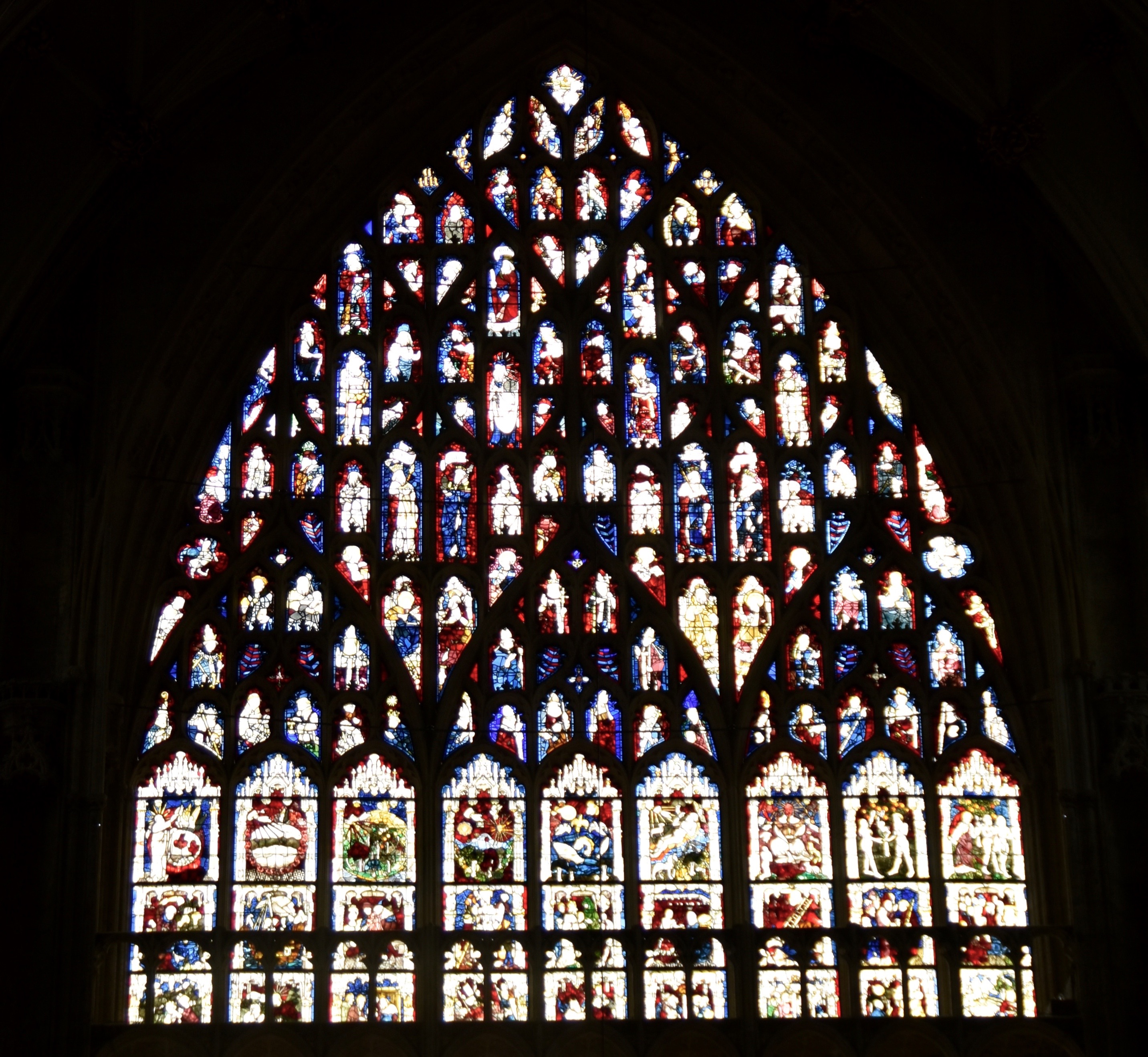
There are hundreds of stories here and there is literally a one inch thick book on site that just describes what’s going on. Here’s just two details which I’m pretty sure is the Garden of Eden, followed by Eve picking the apples and then the expulsion. Just like you could spend hours photographing interesting shop signs in York so you could taking pictures of the details of this magnificent window.
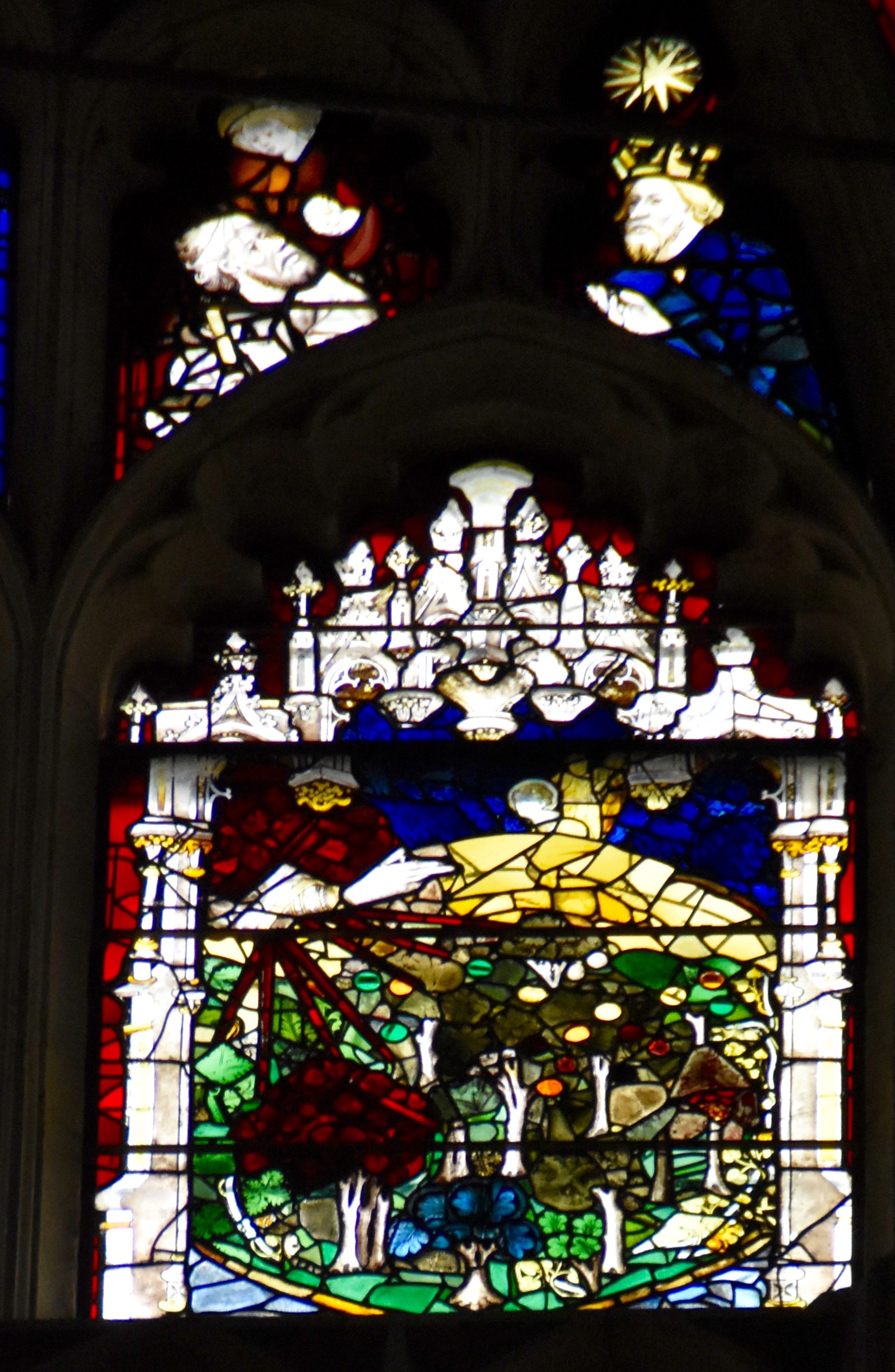
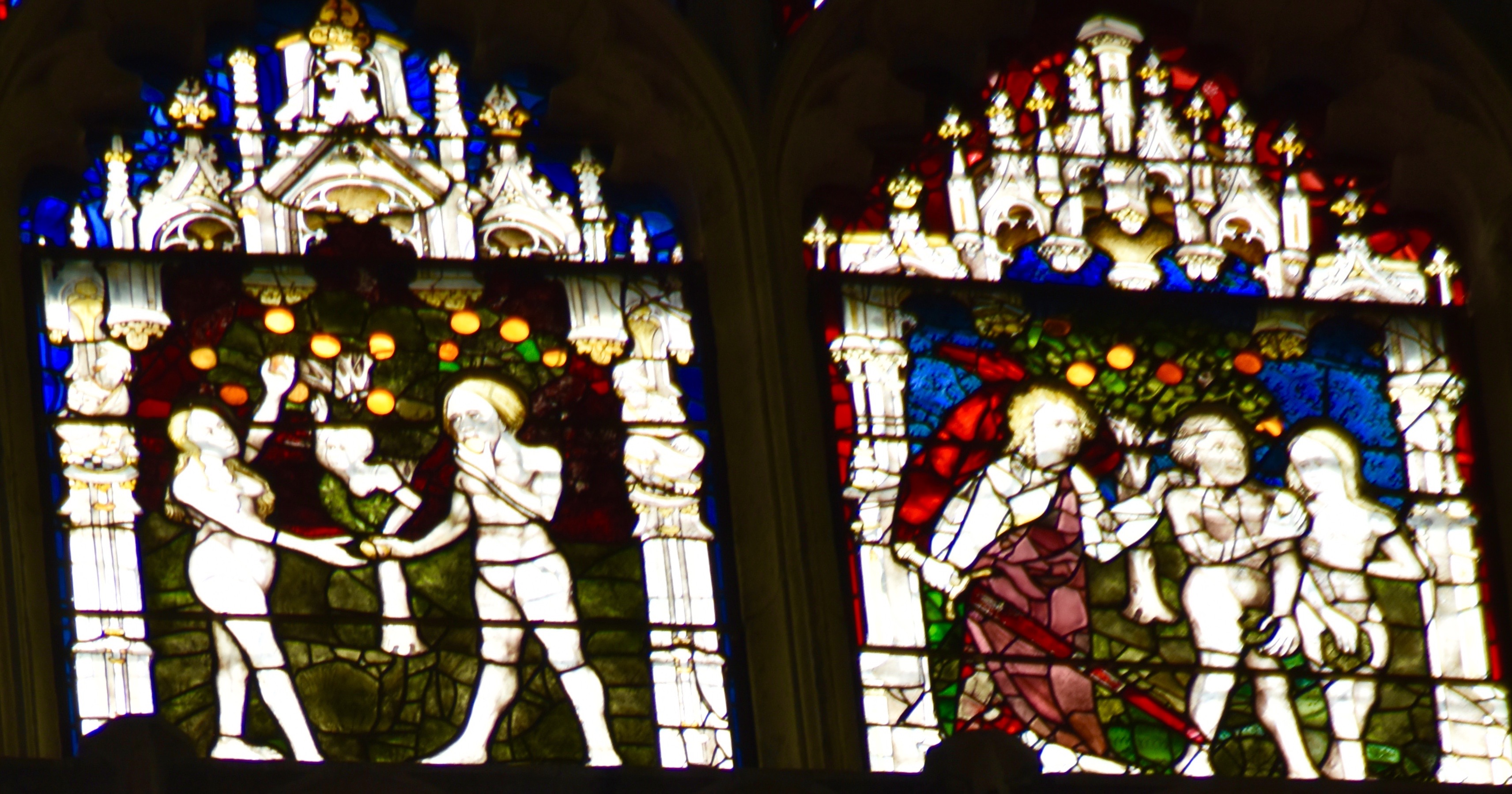
There are other windows also of interest, particularly this rosette. I think these may well be the epitome of Gothic High Art

And this.
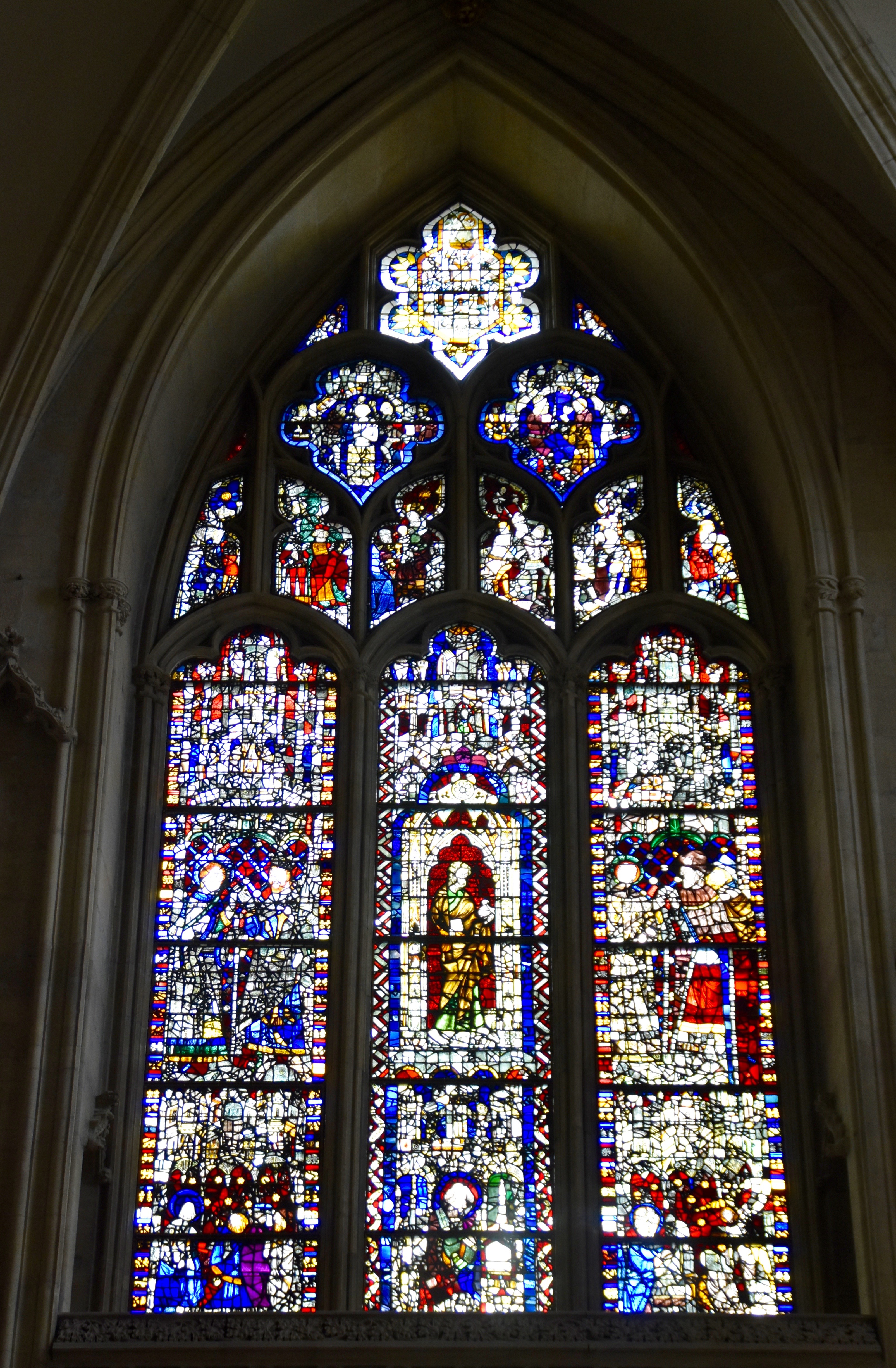
While York Minster has nowhere near the number of famous entombments that Westminster or St. Paul’s has, it does have a few. This is the tomb of William, second son of the legendary King Edward III. He is shown as a probable teenager, but actually lived less than six months.

Something you might not notice of not looking closely is this head of a golden dragon sticking out high on the left side of the nave. It’s apparently a 19th century recarving of one that was destroyed in an earlier fire.
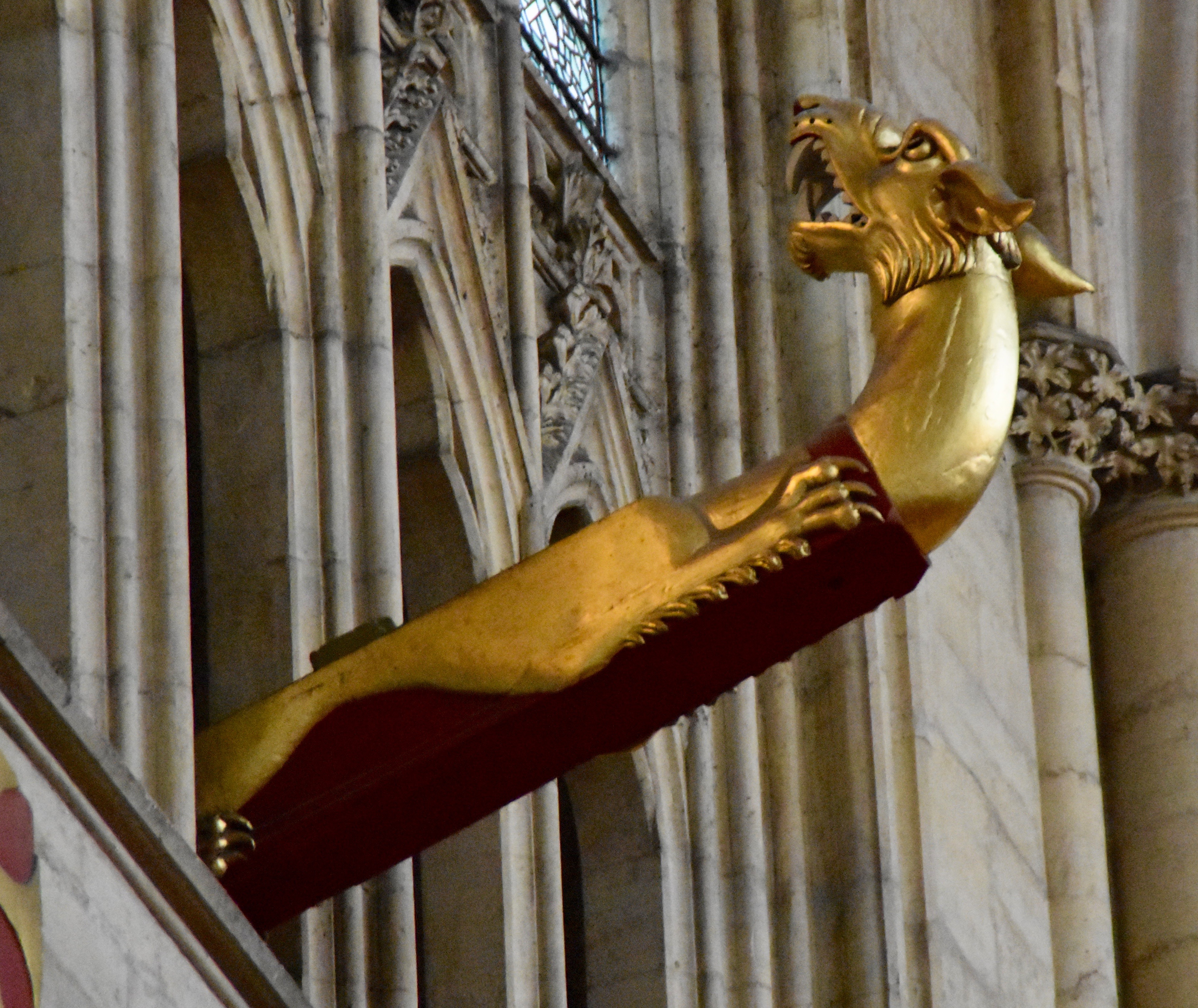
Unfortunately time has run out and we need to make our way back to the hotel, but not before running into one final oddity in medieval York. This is my sister Anne on the left and Alison on the right sitting on an hexagonal bench that surrounds a tree.
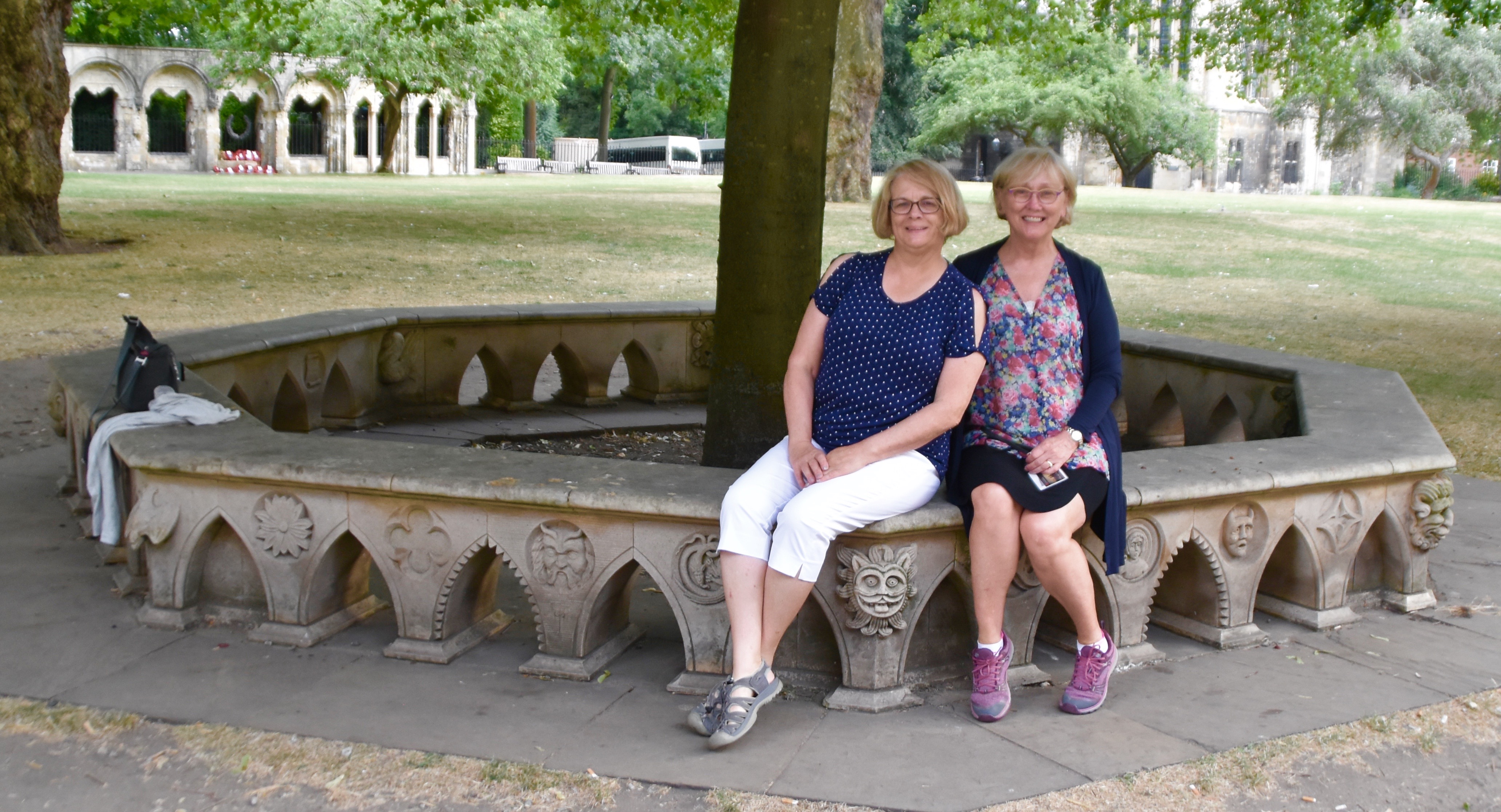
What this is or why it’s here, I don’t know, but have a look at the figures that appear all around it. Each is unique and most appear evil. Another photographic opportunity. See if you agree.
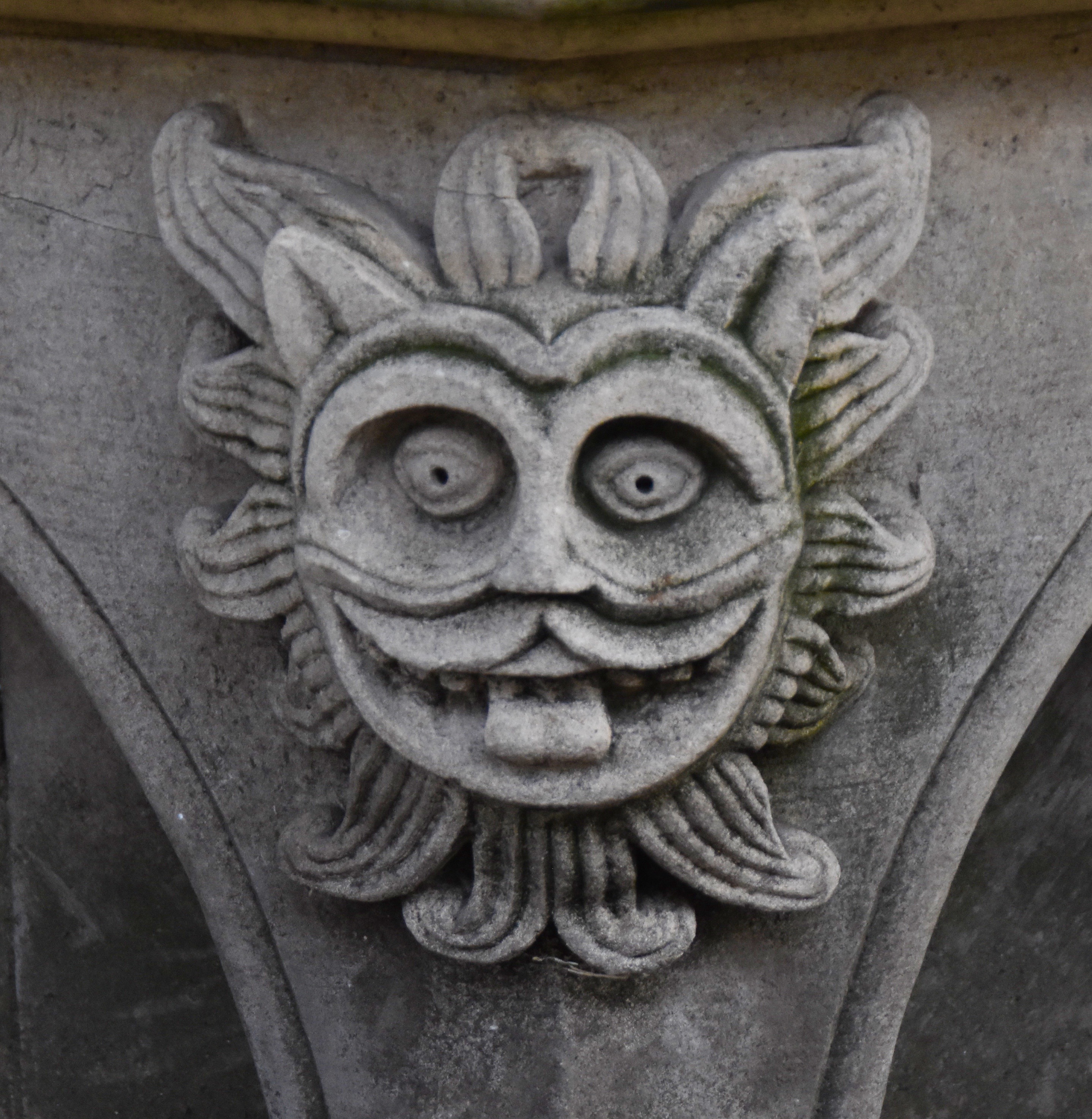
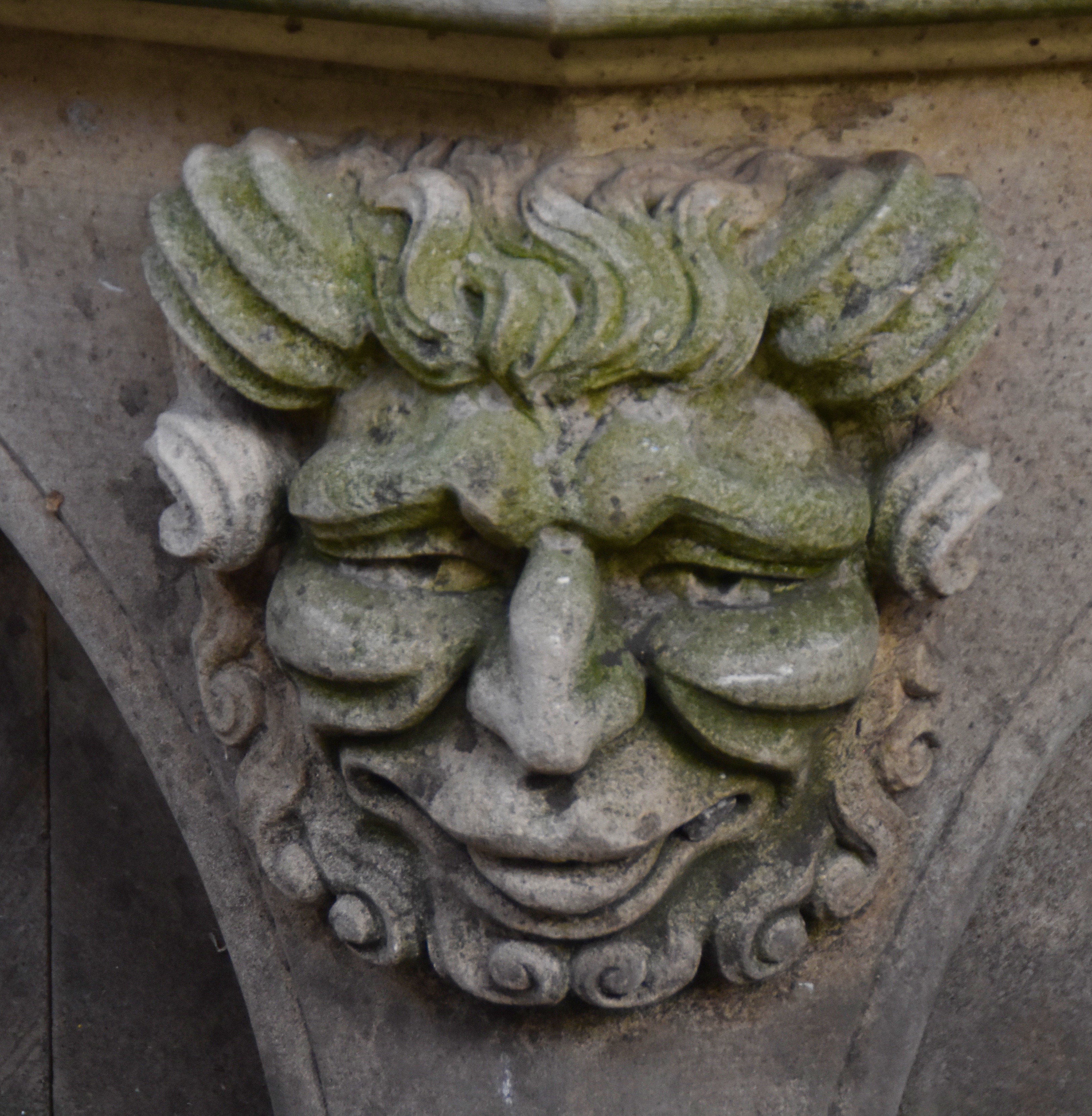


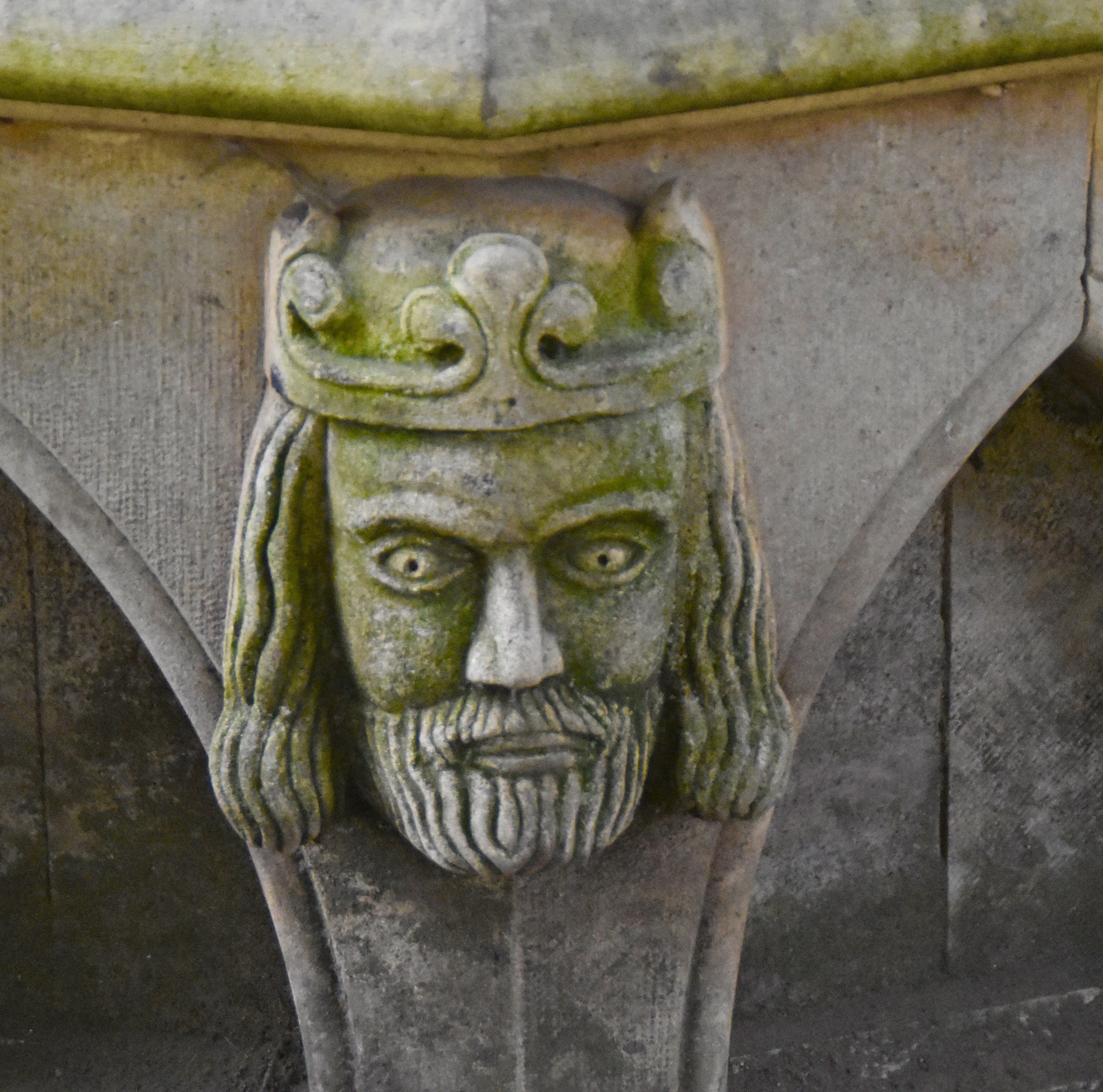
And my favourite.
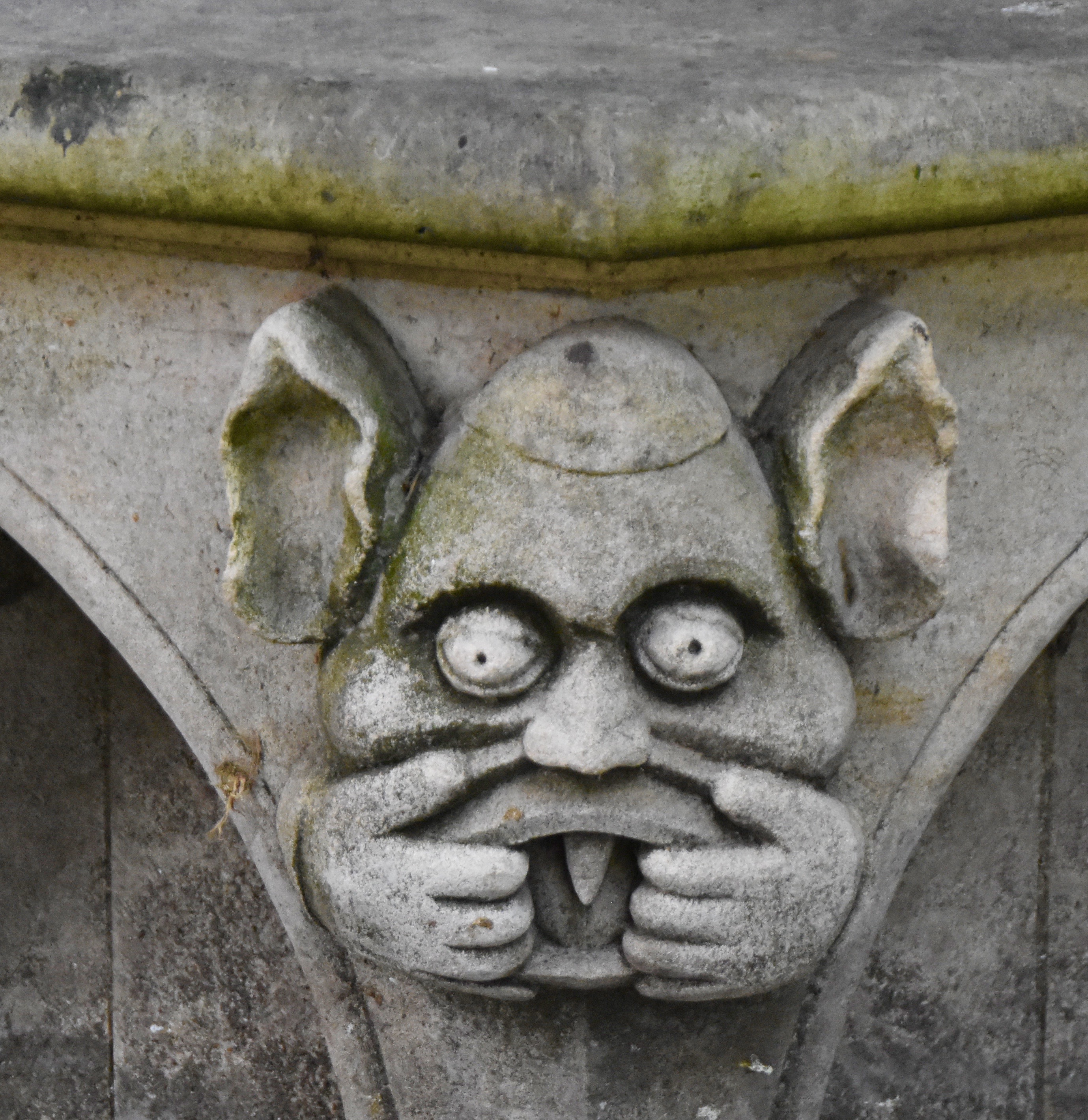
Well that concludes this very quick walk around old York and I hope I have convinced you that it might be the most interesting city in England.

